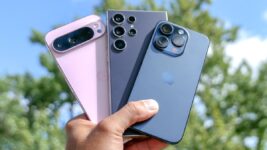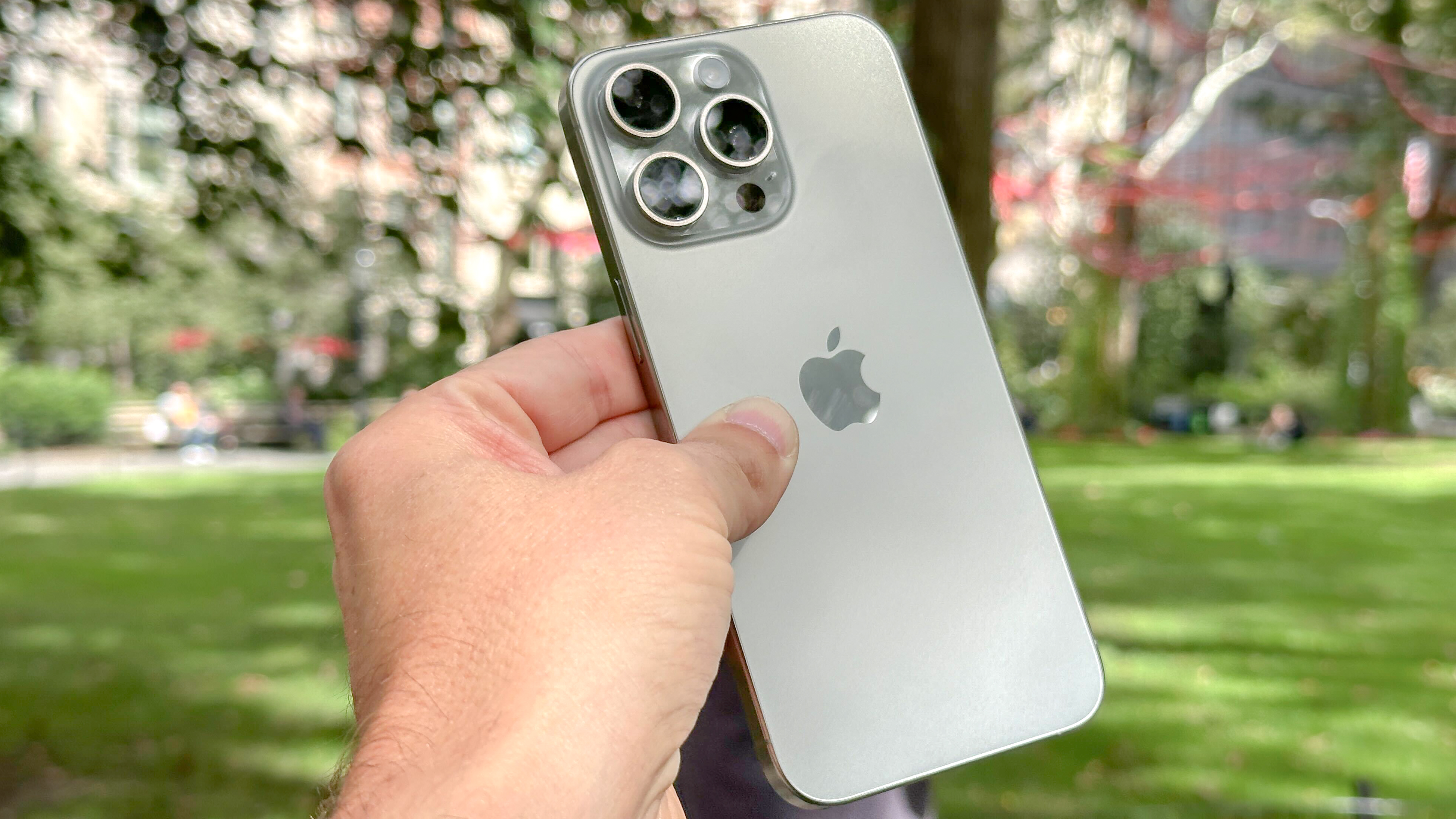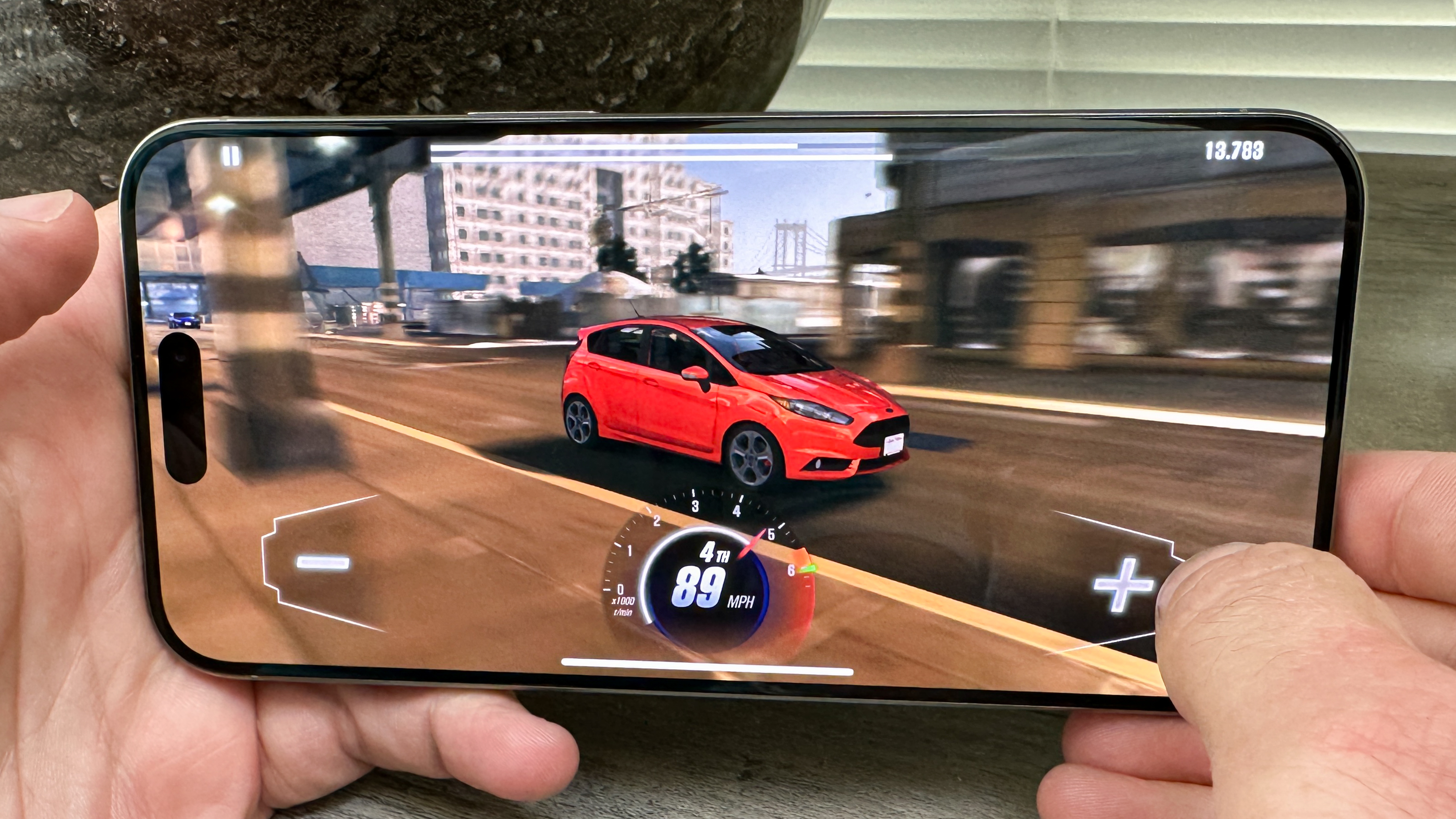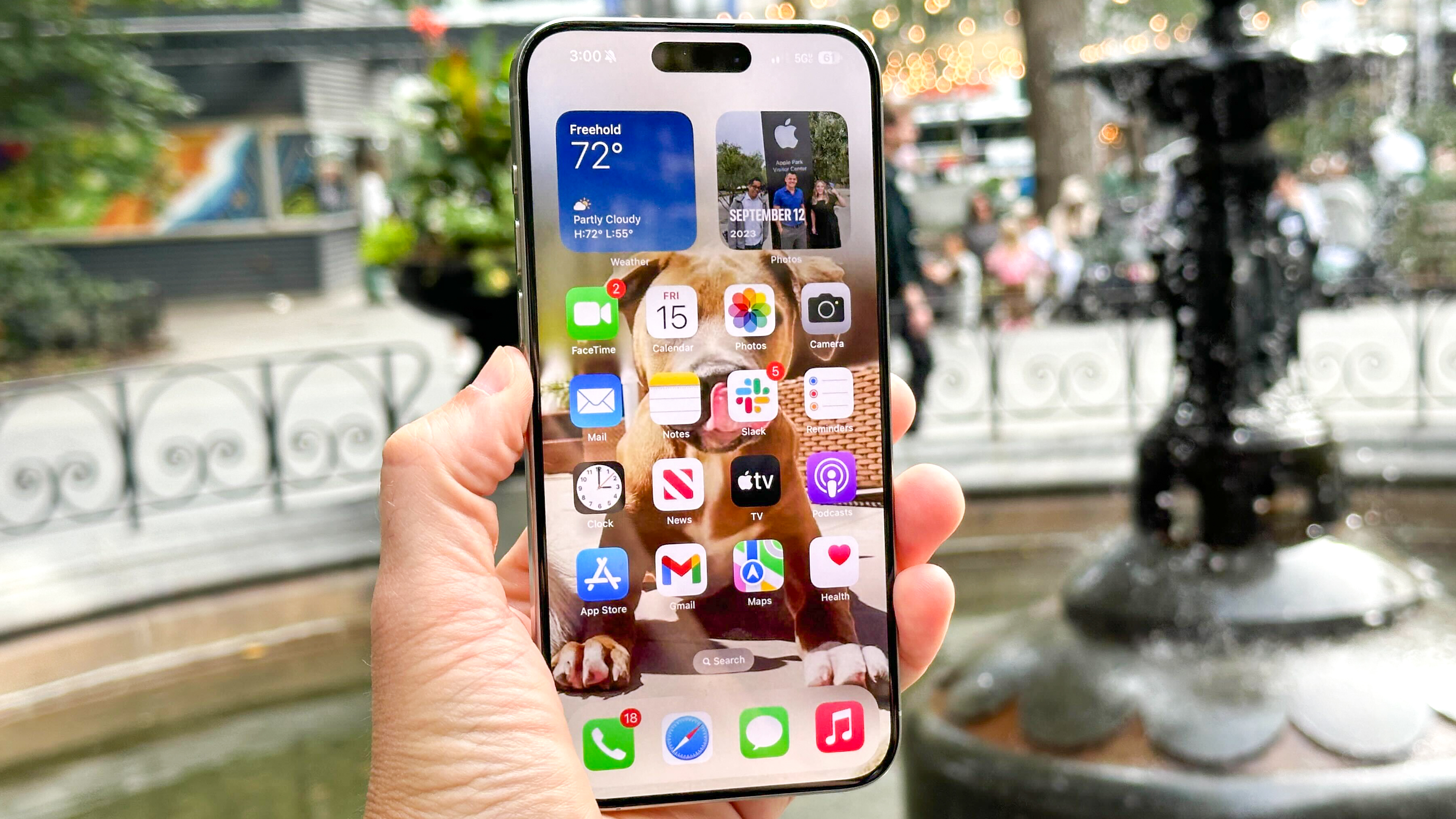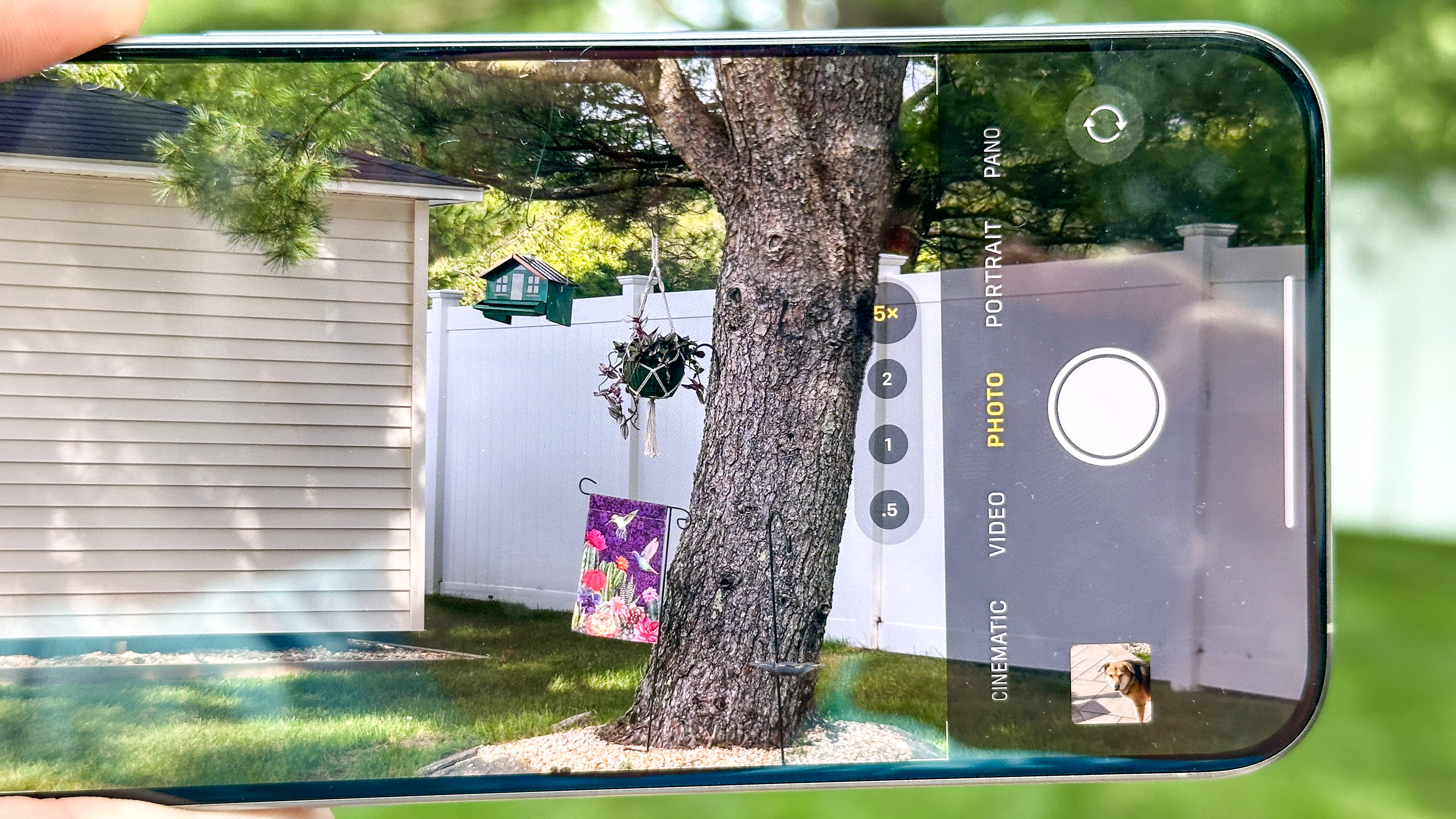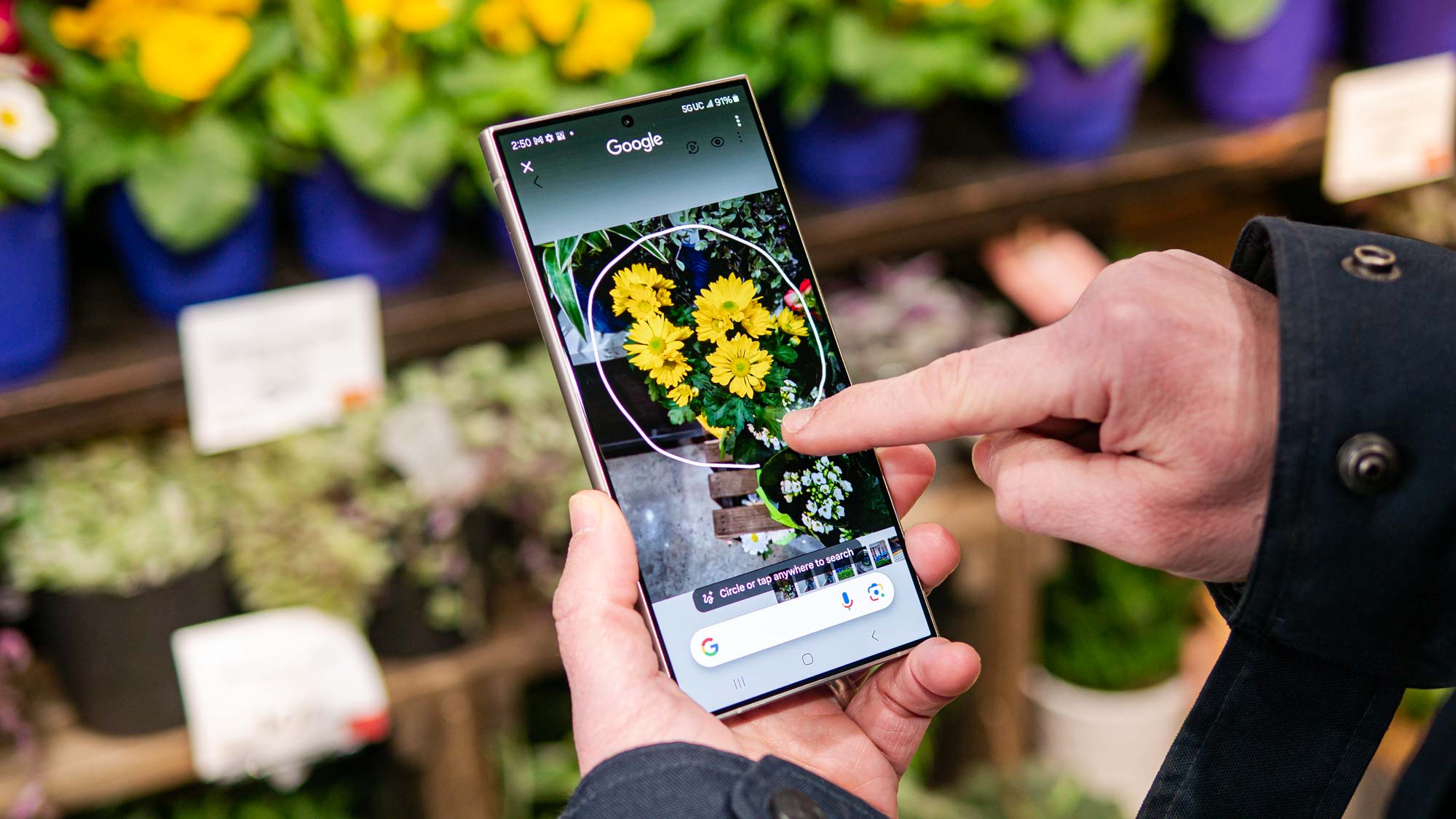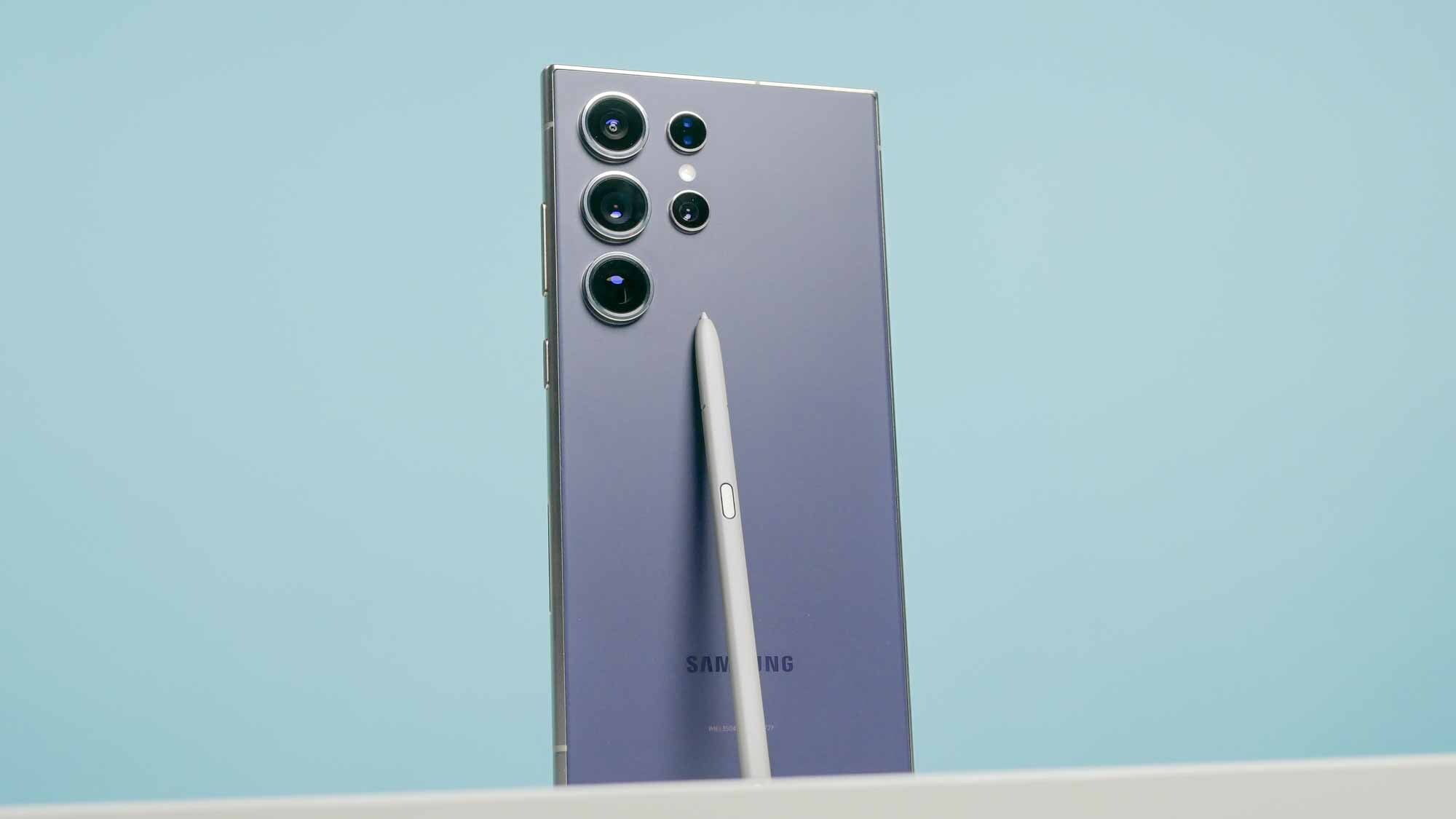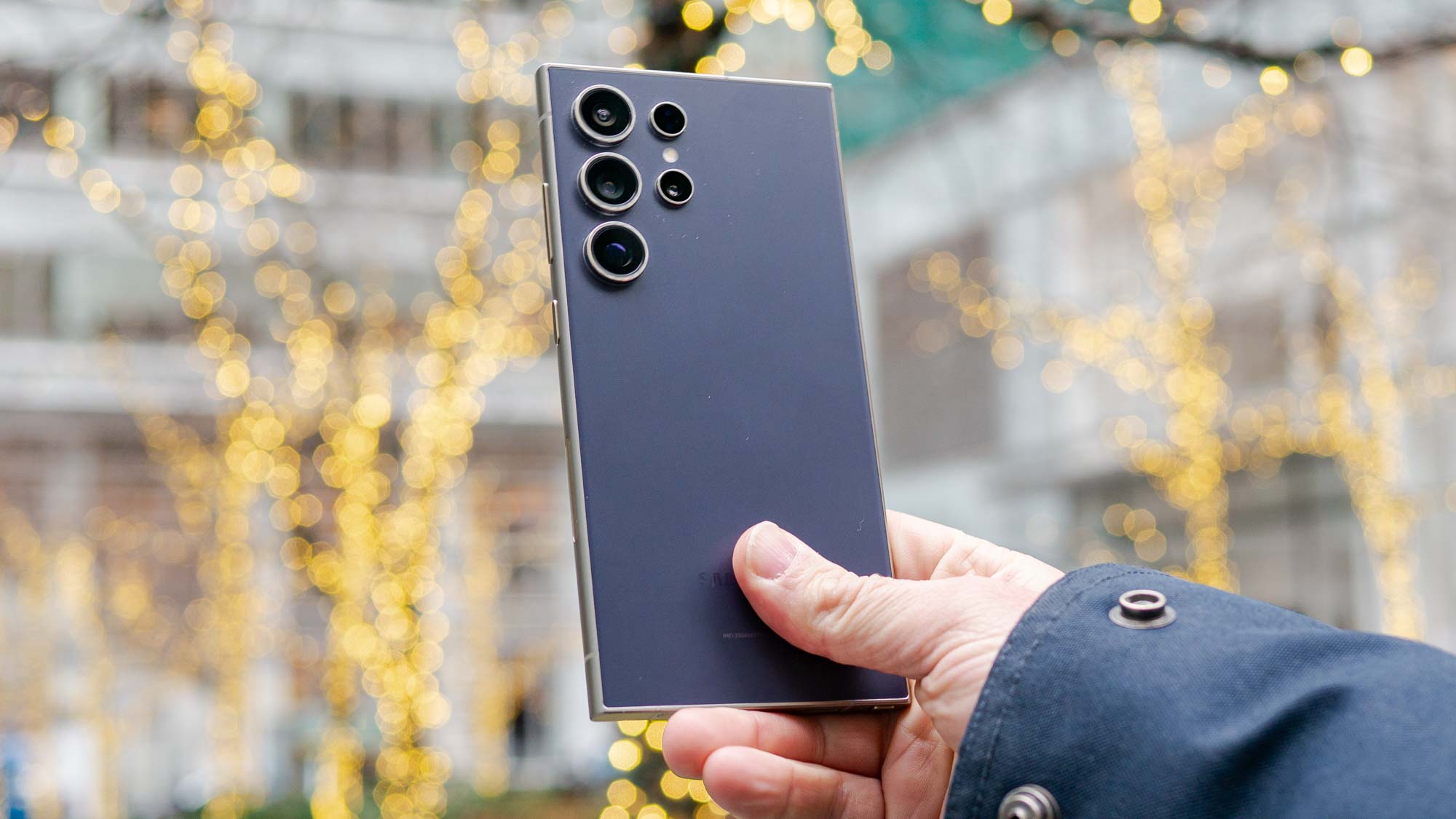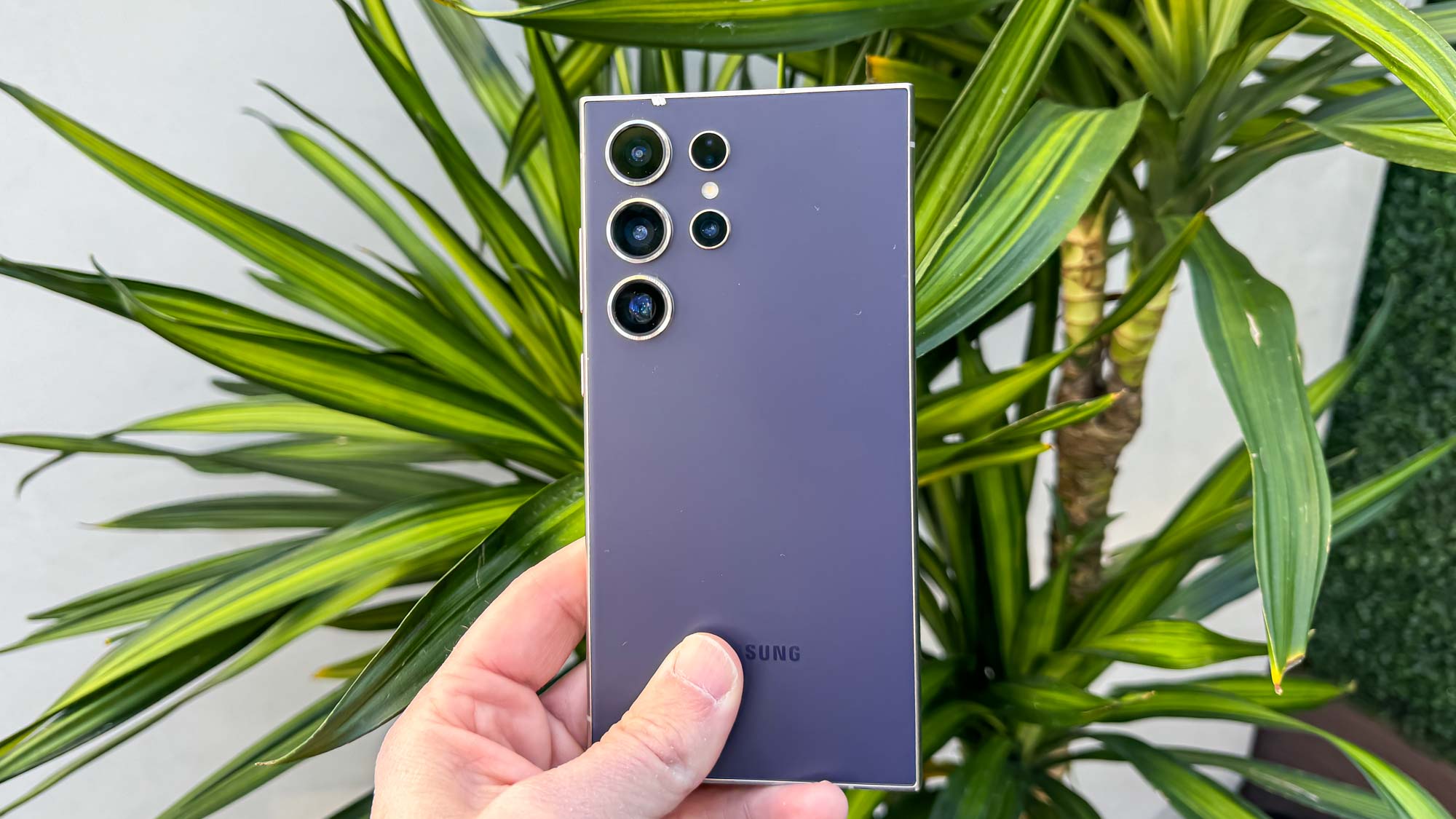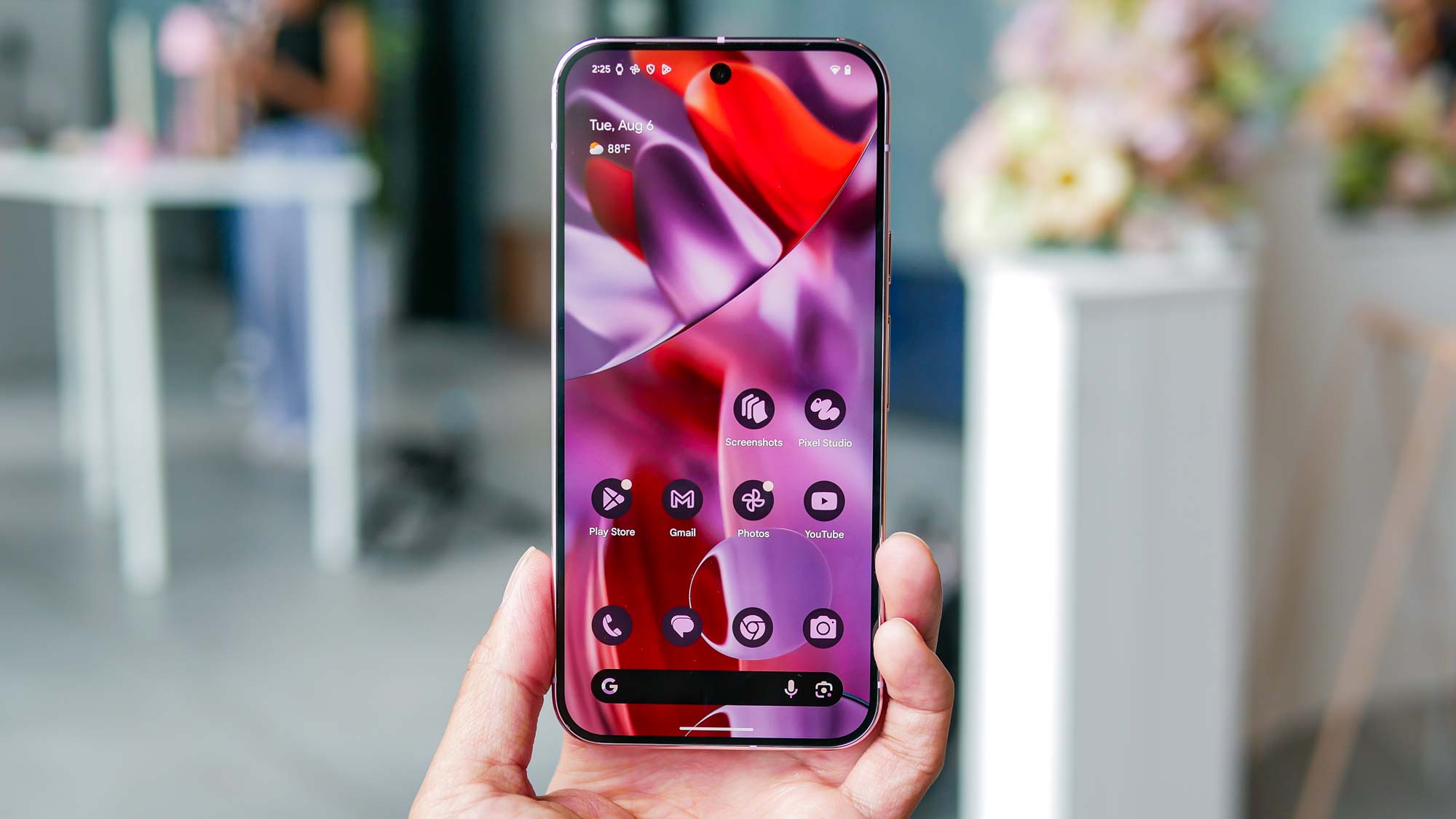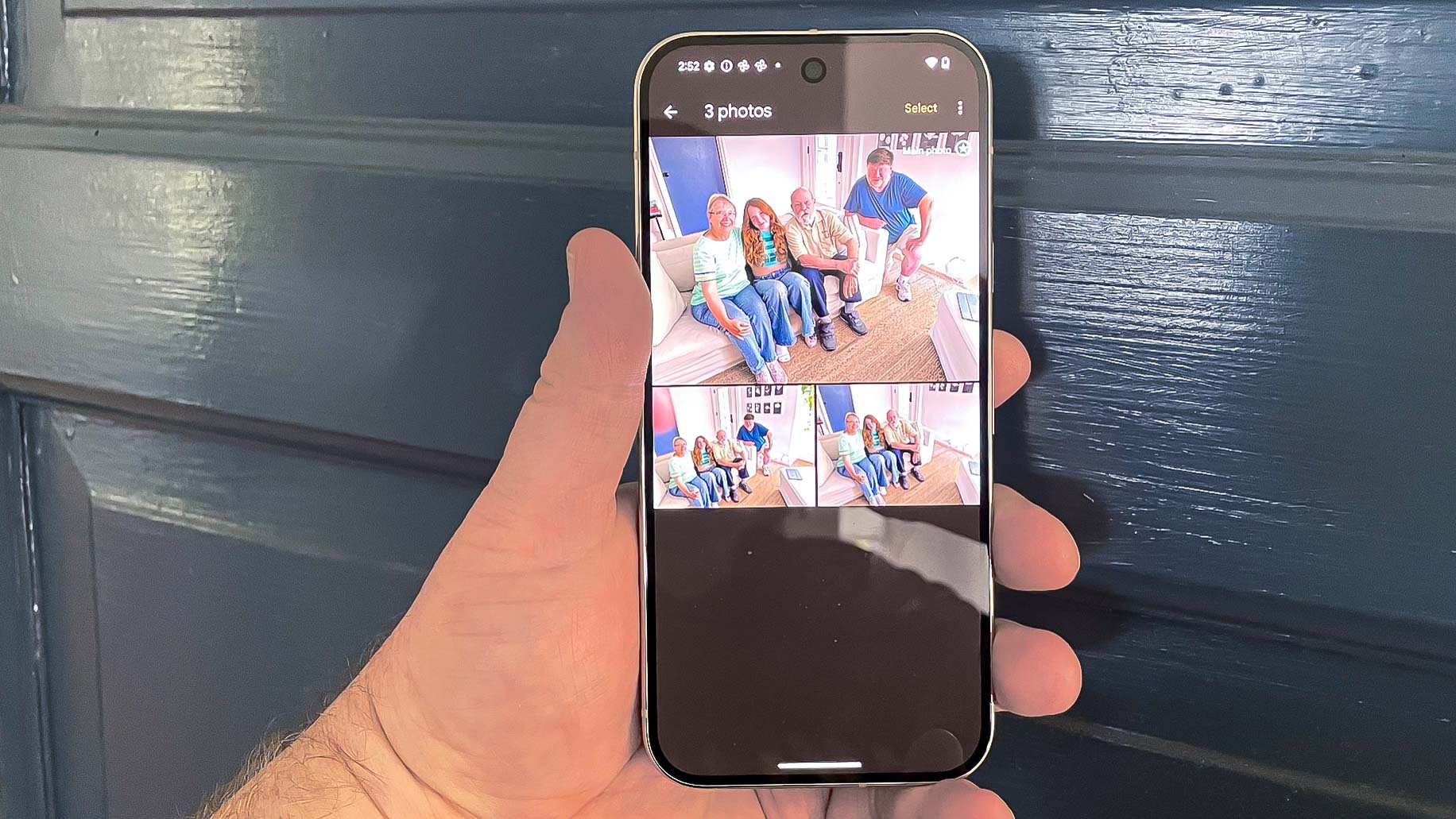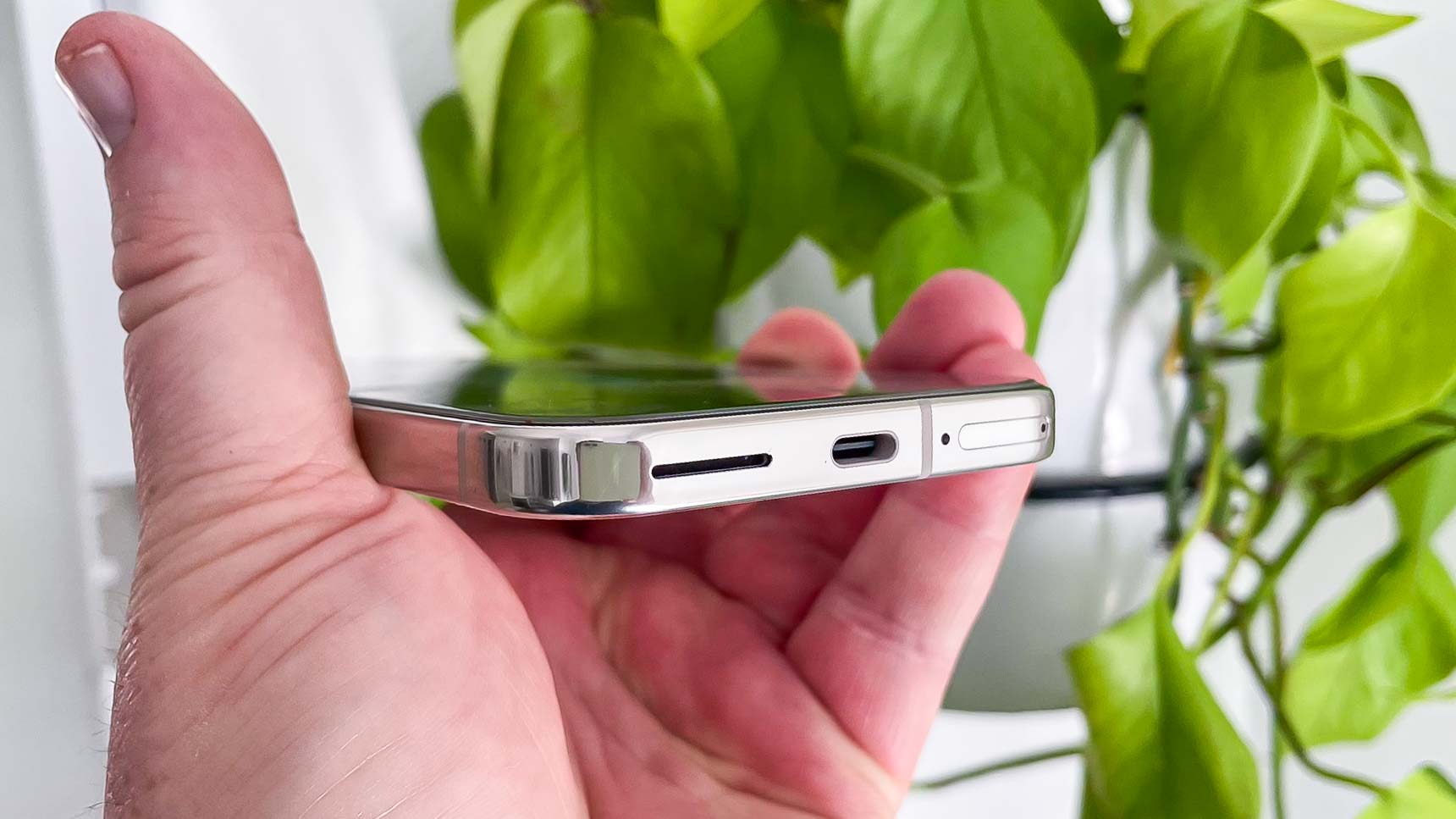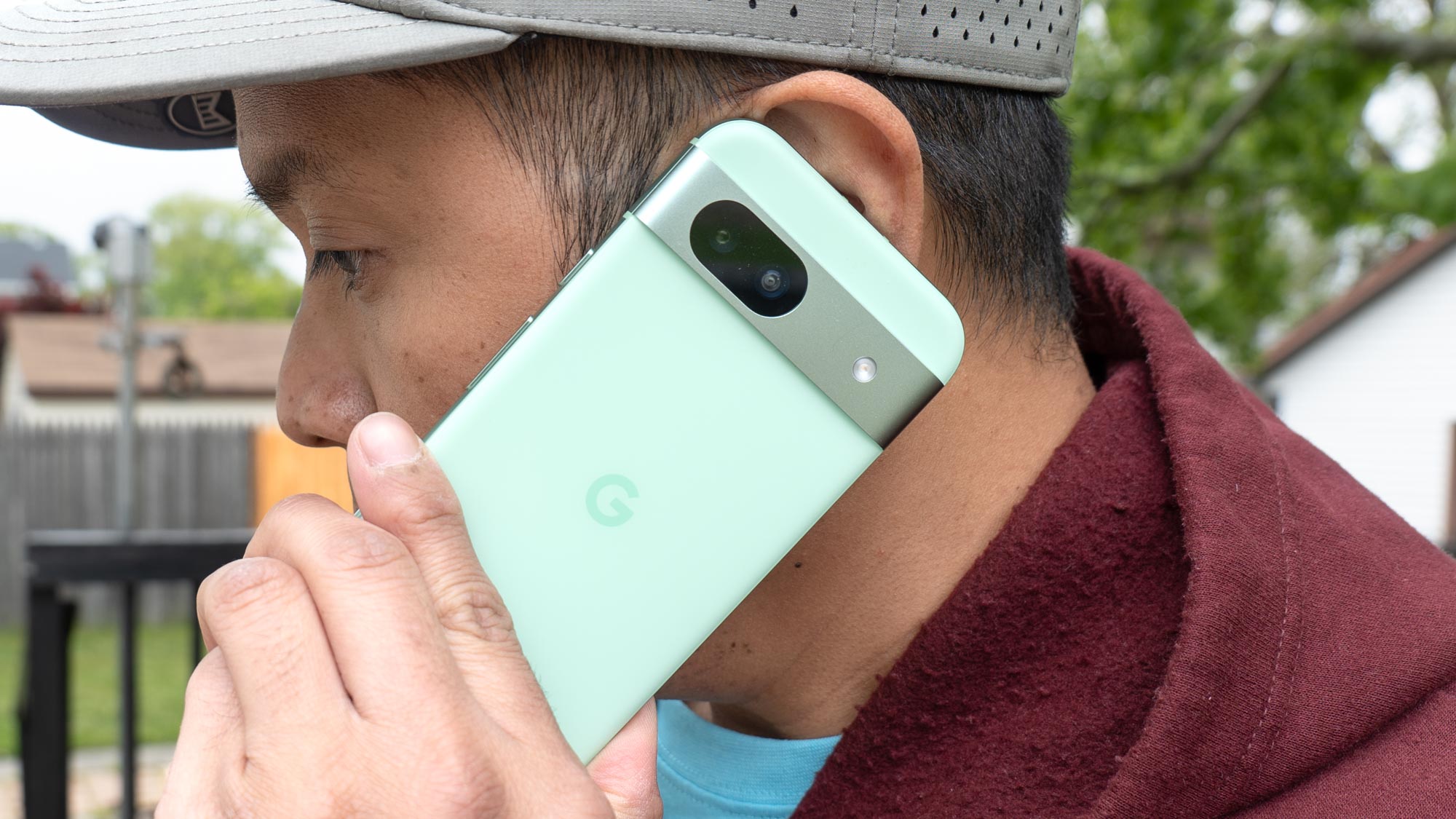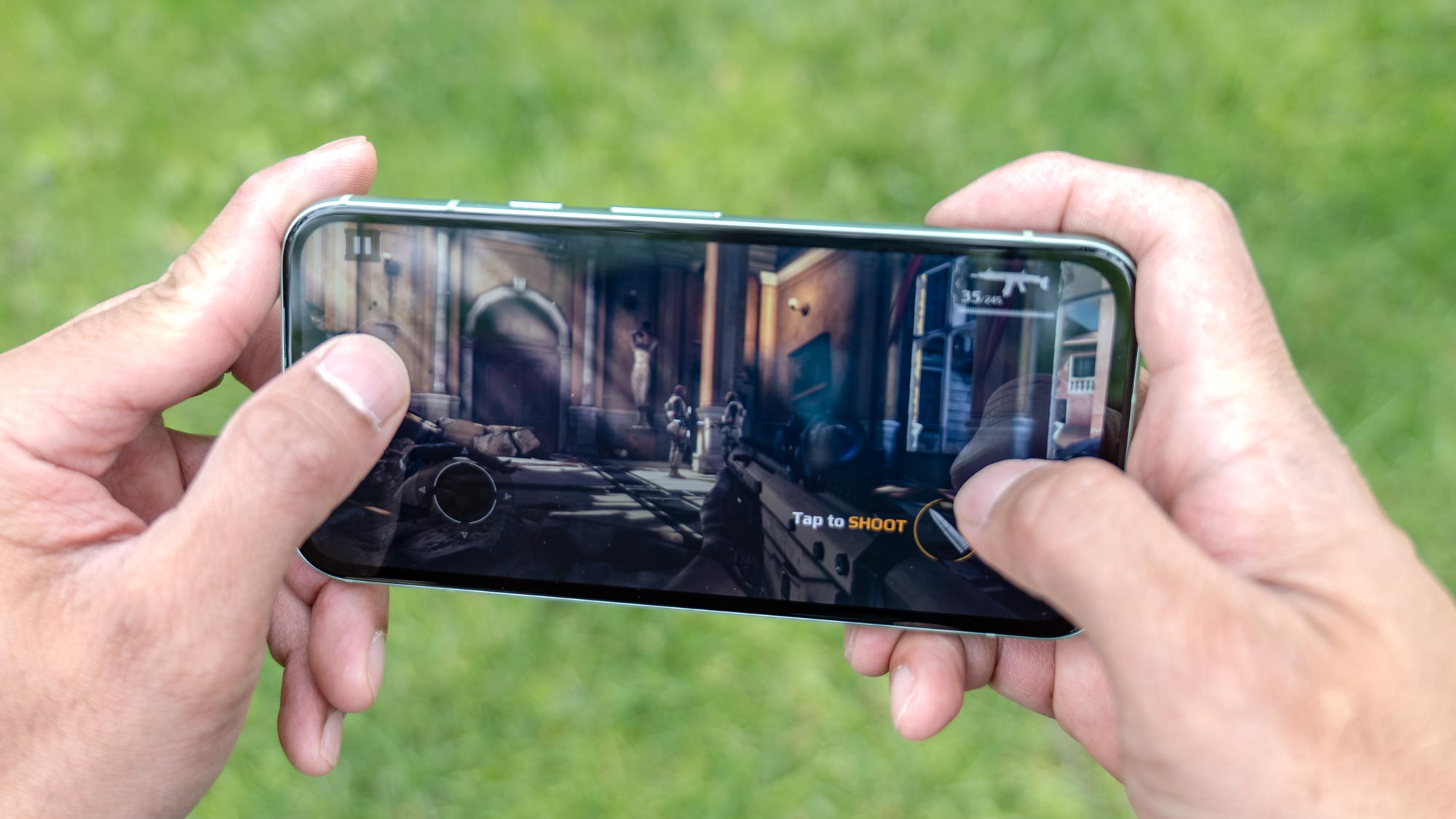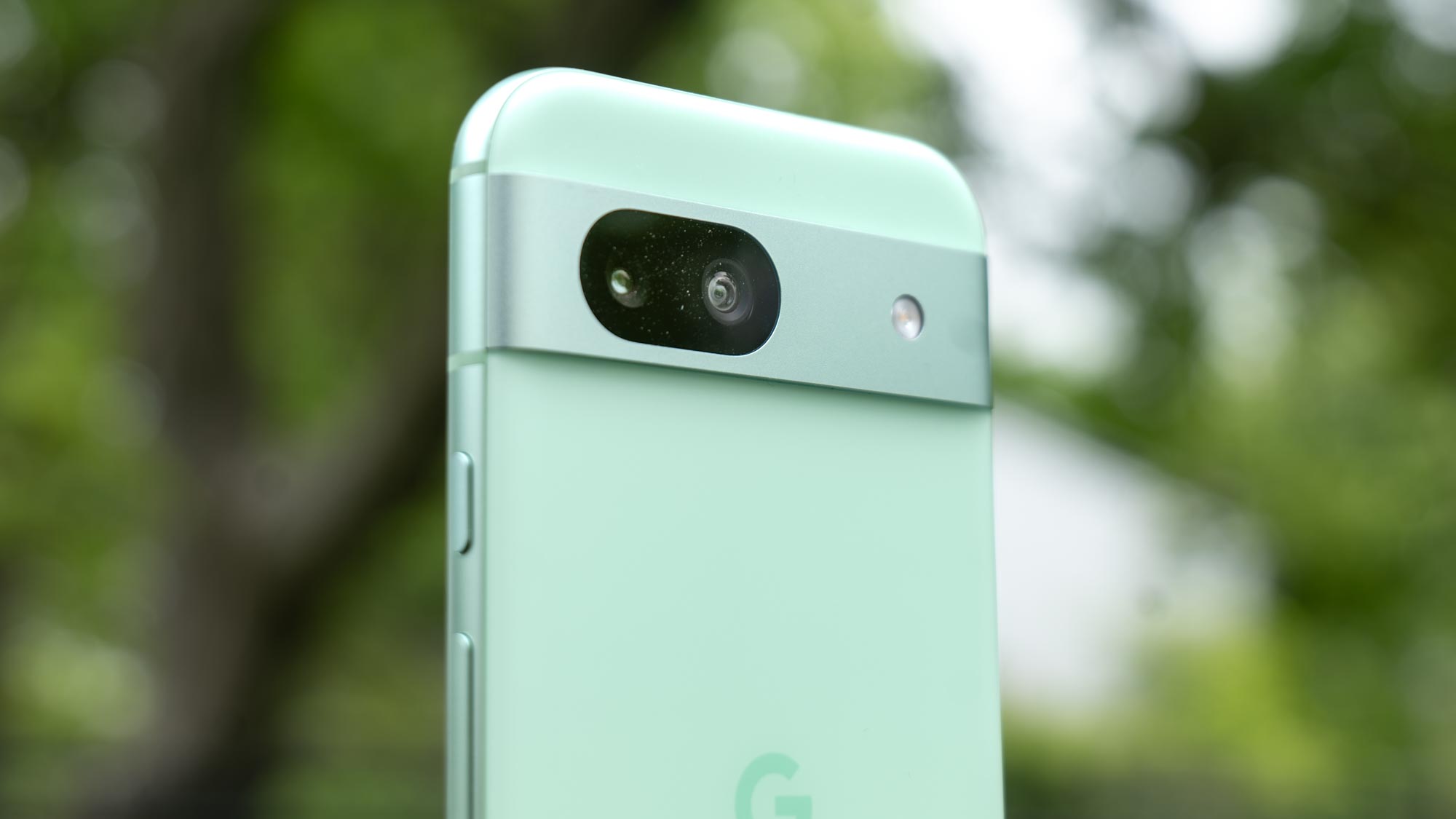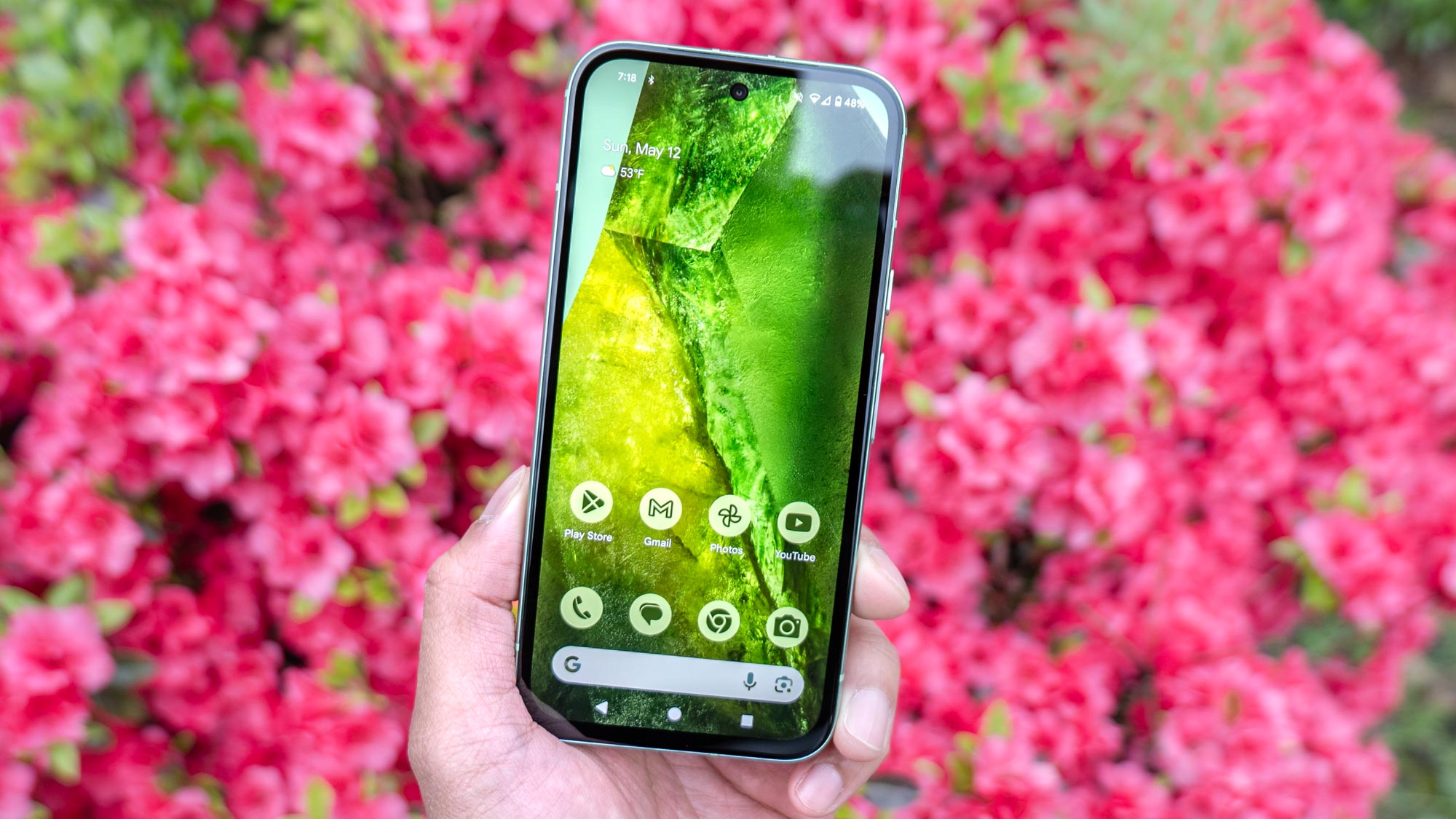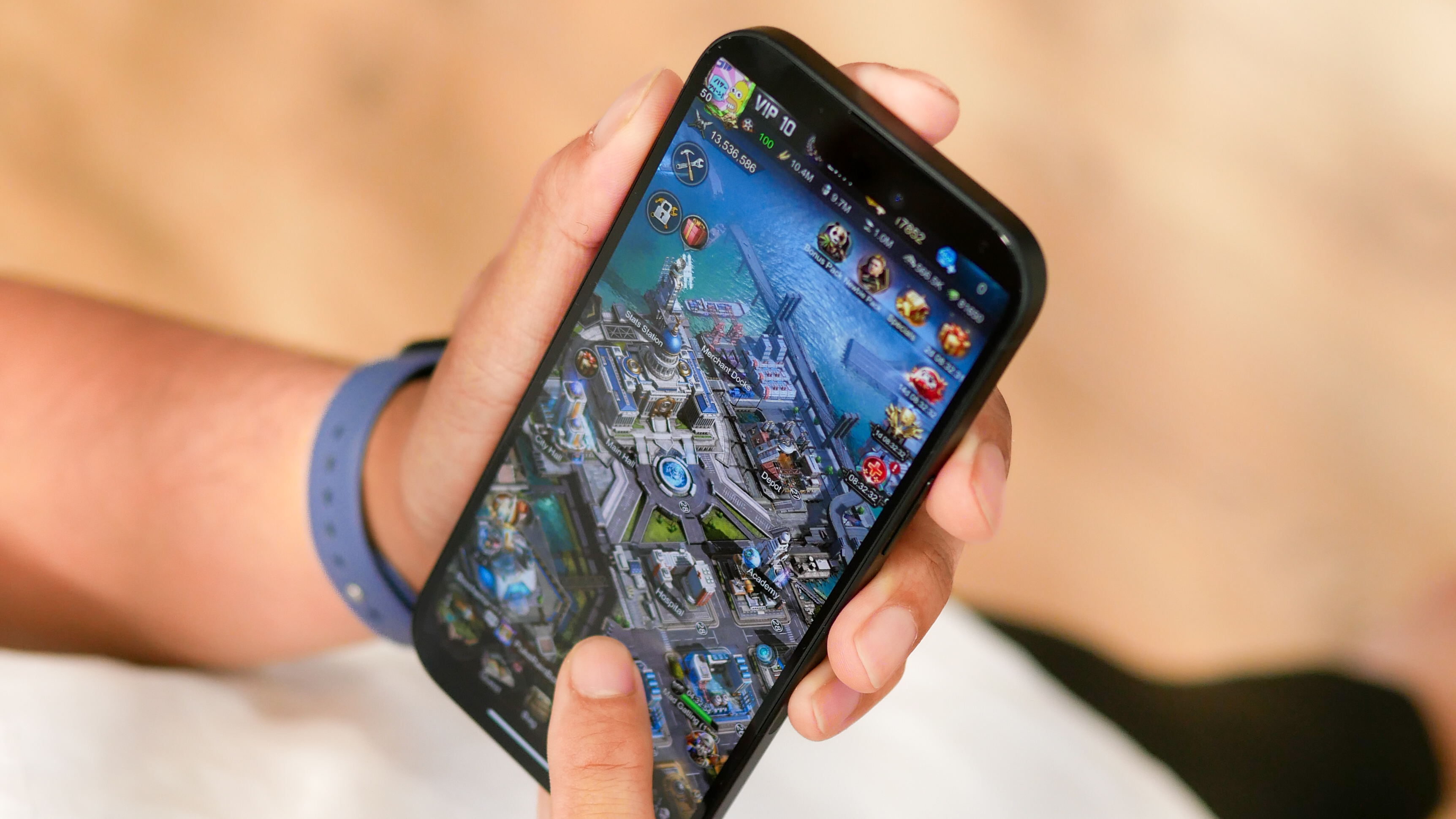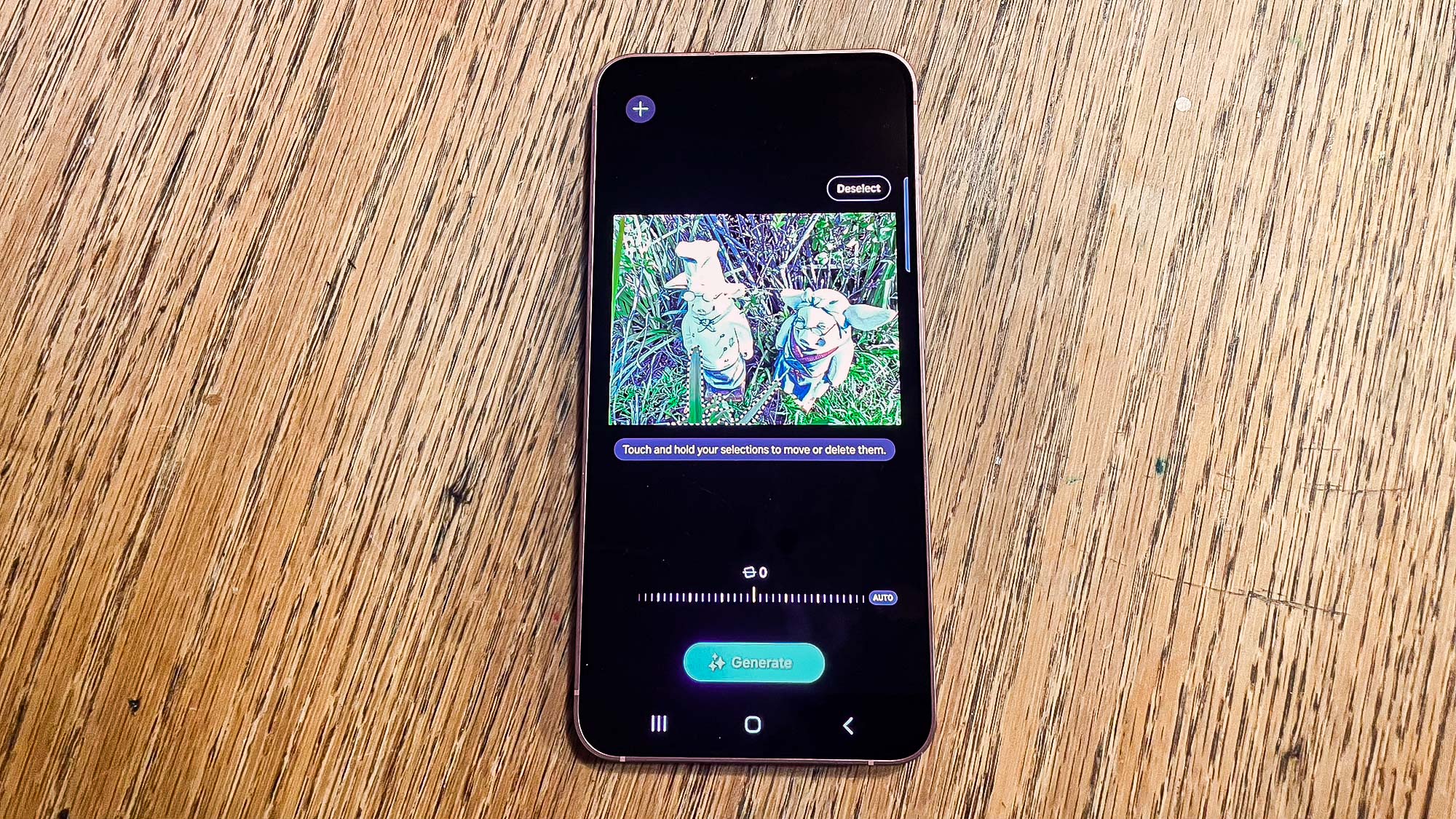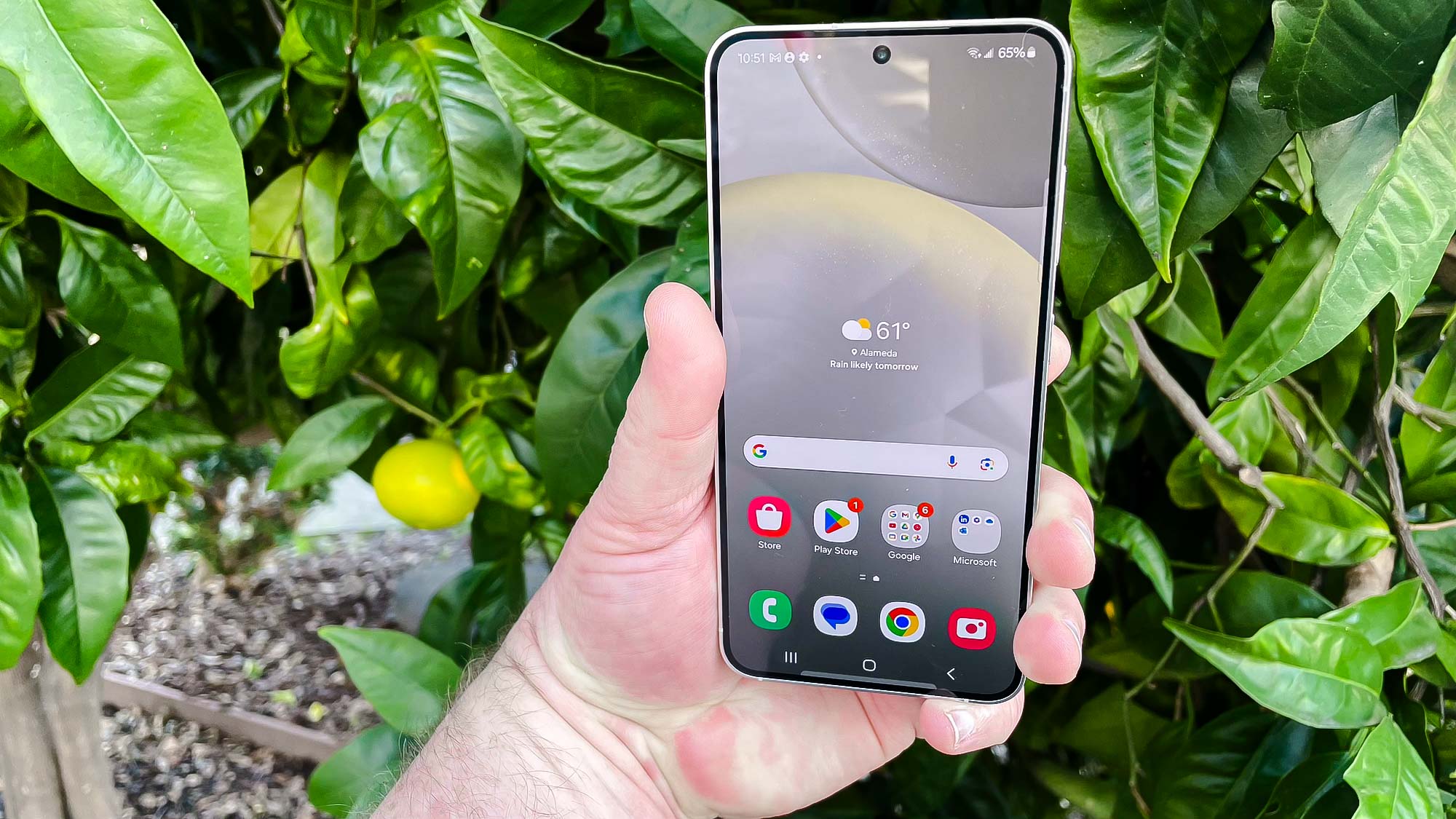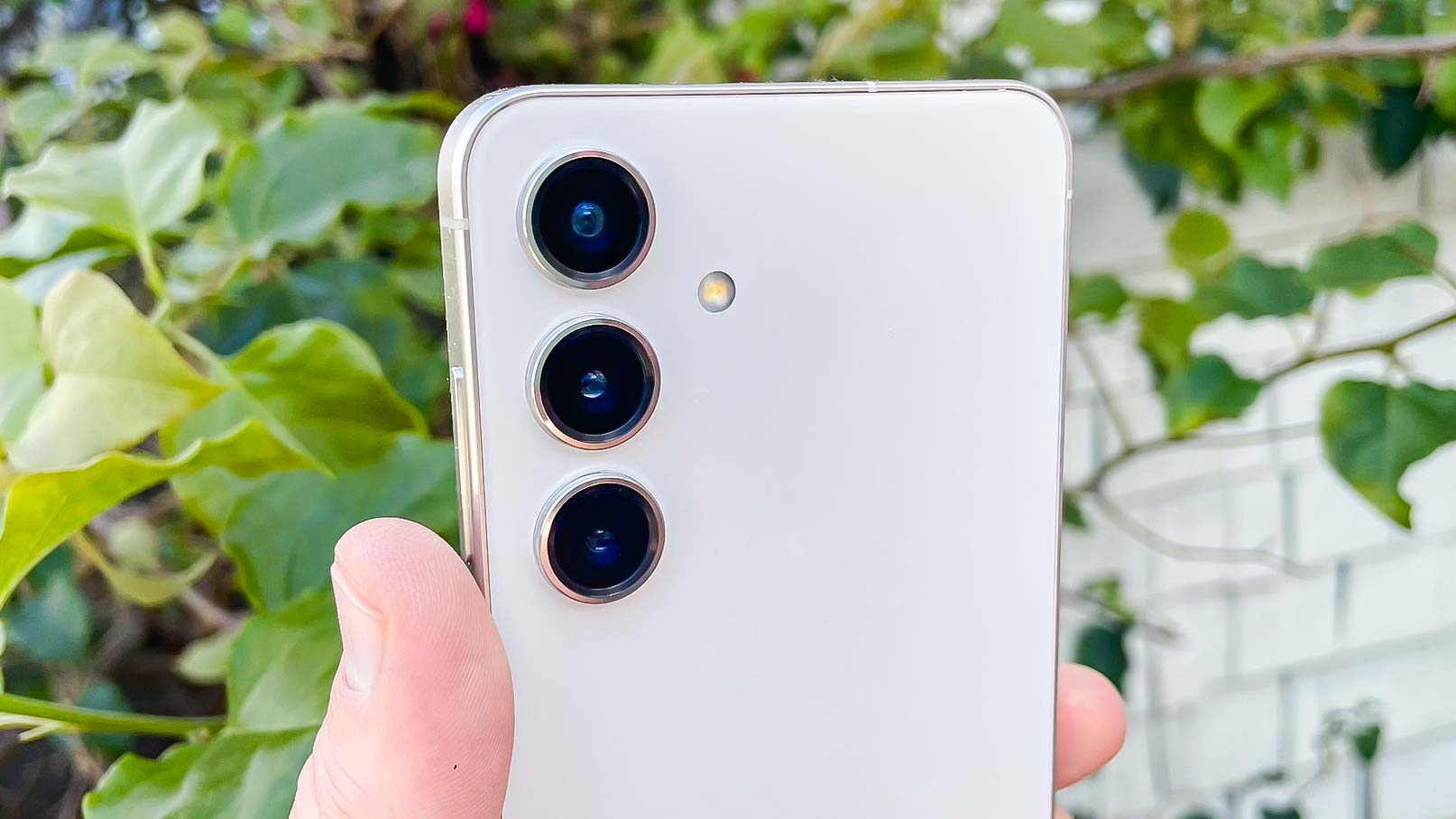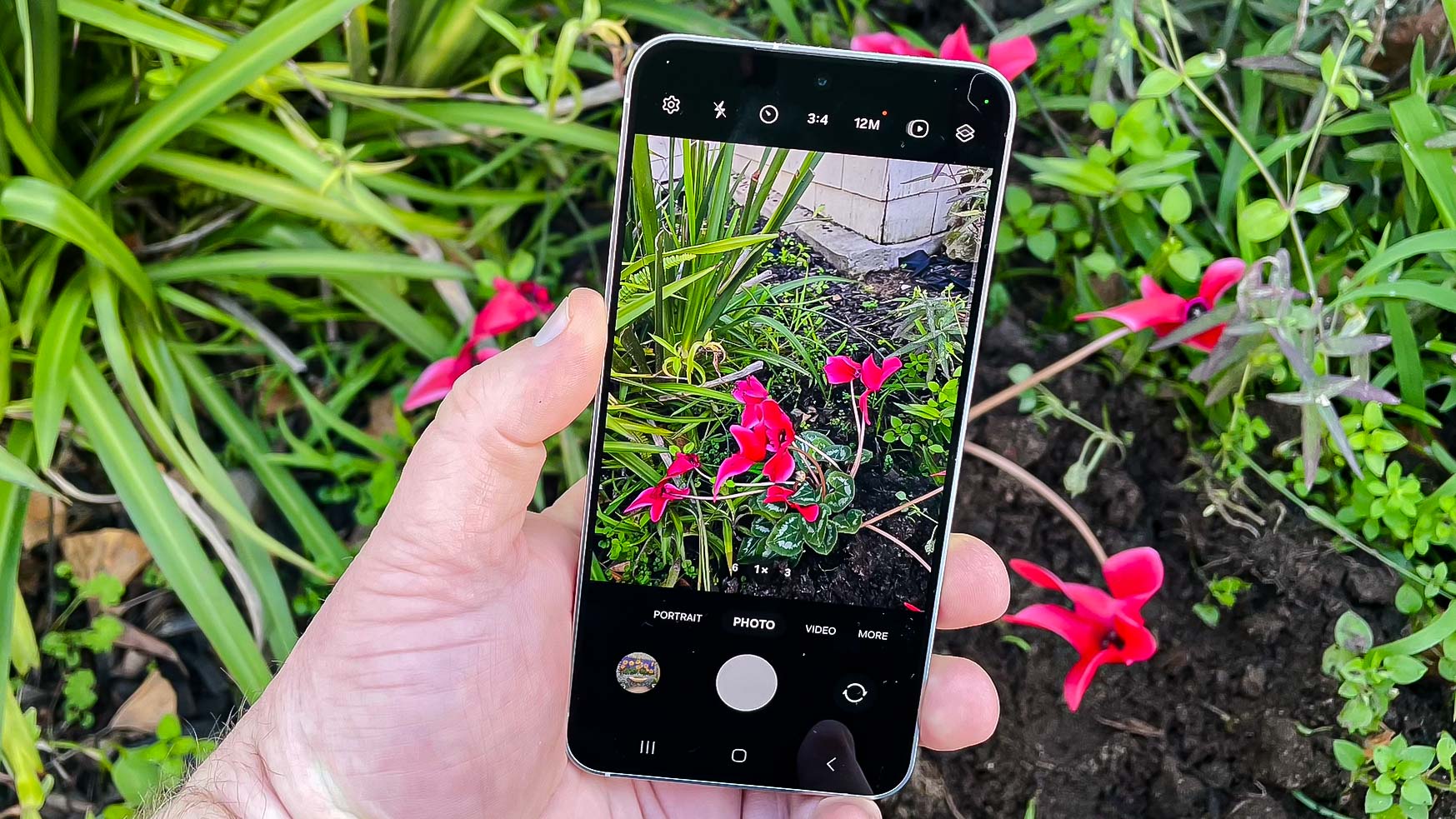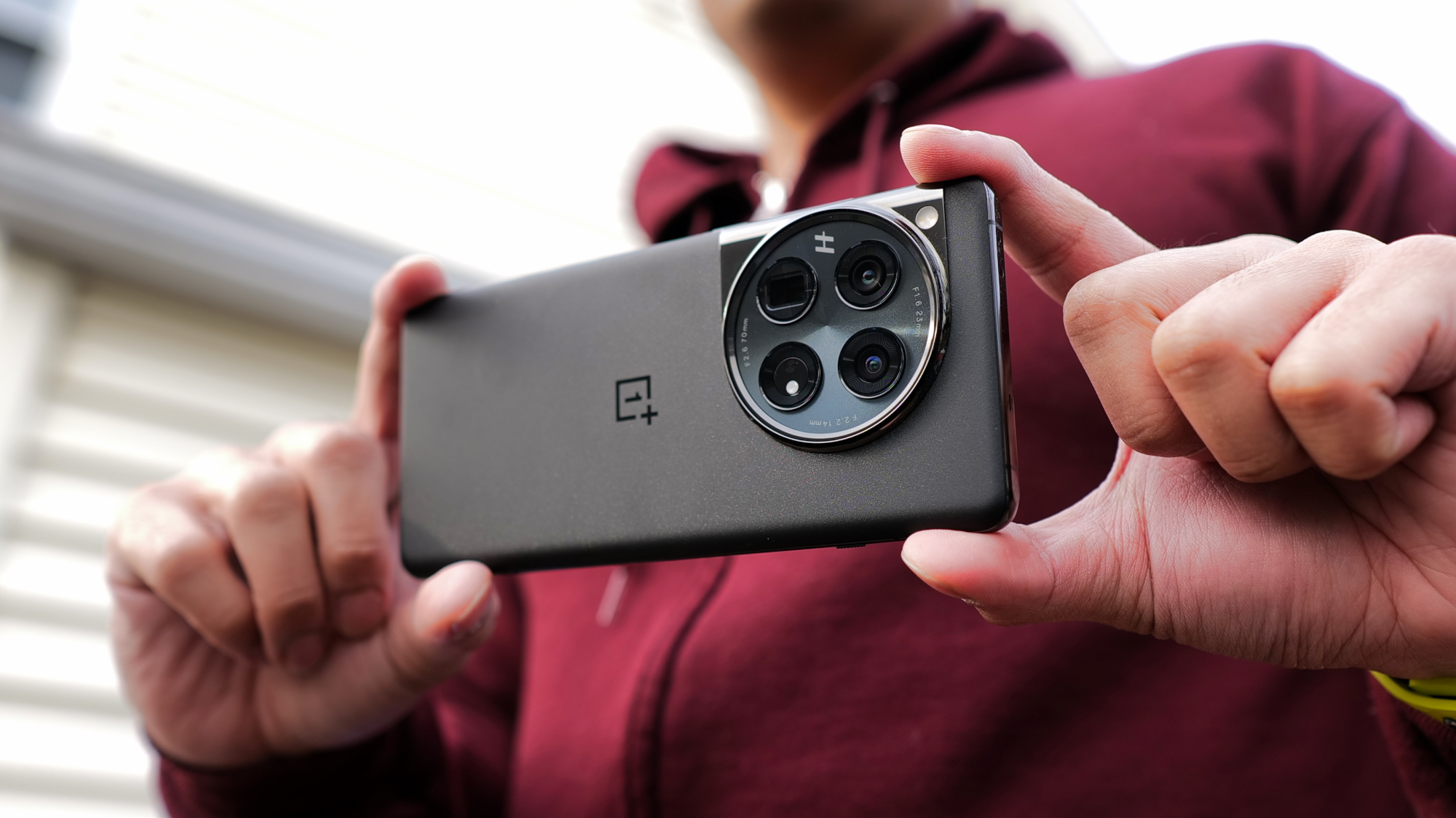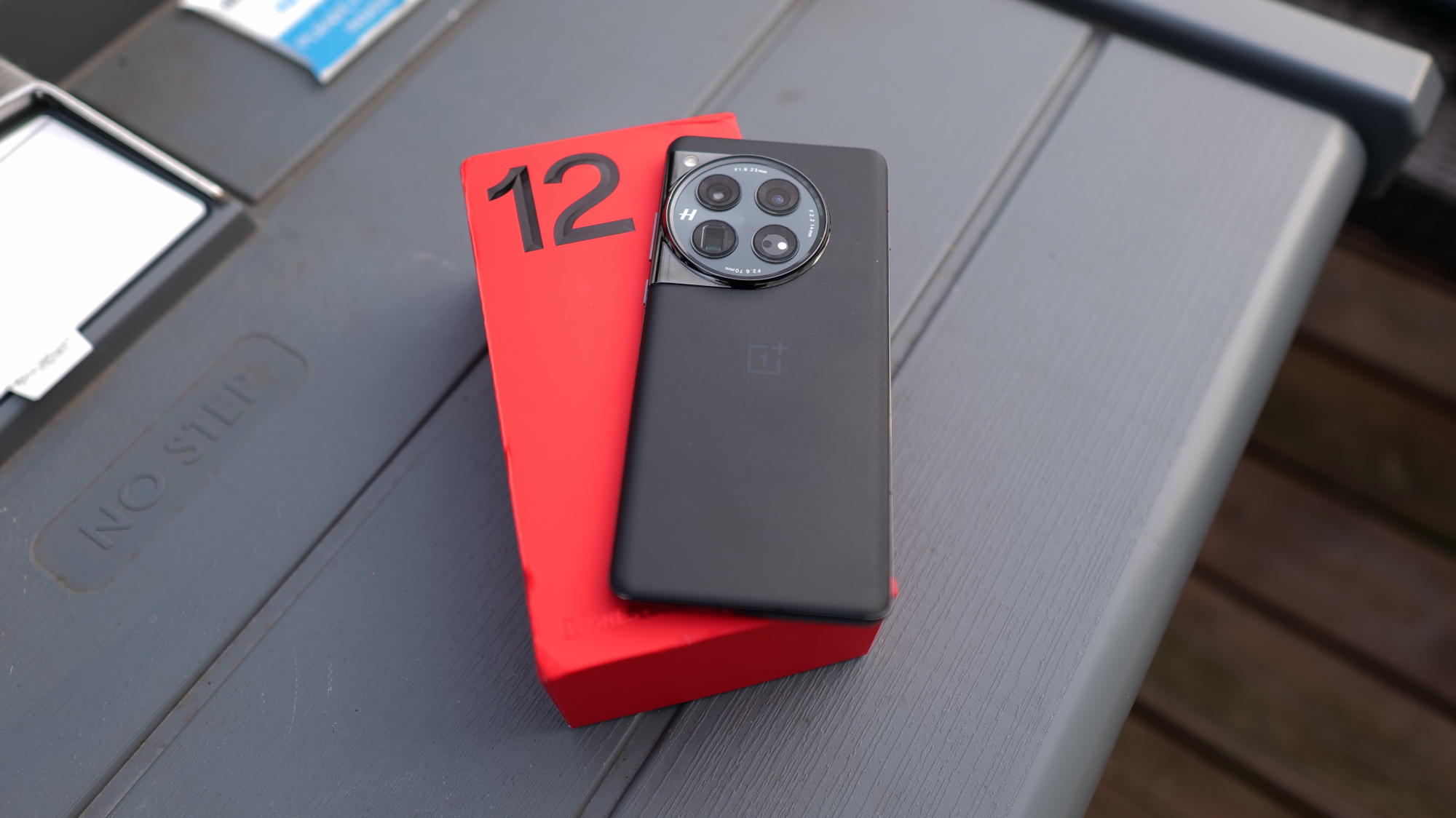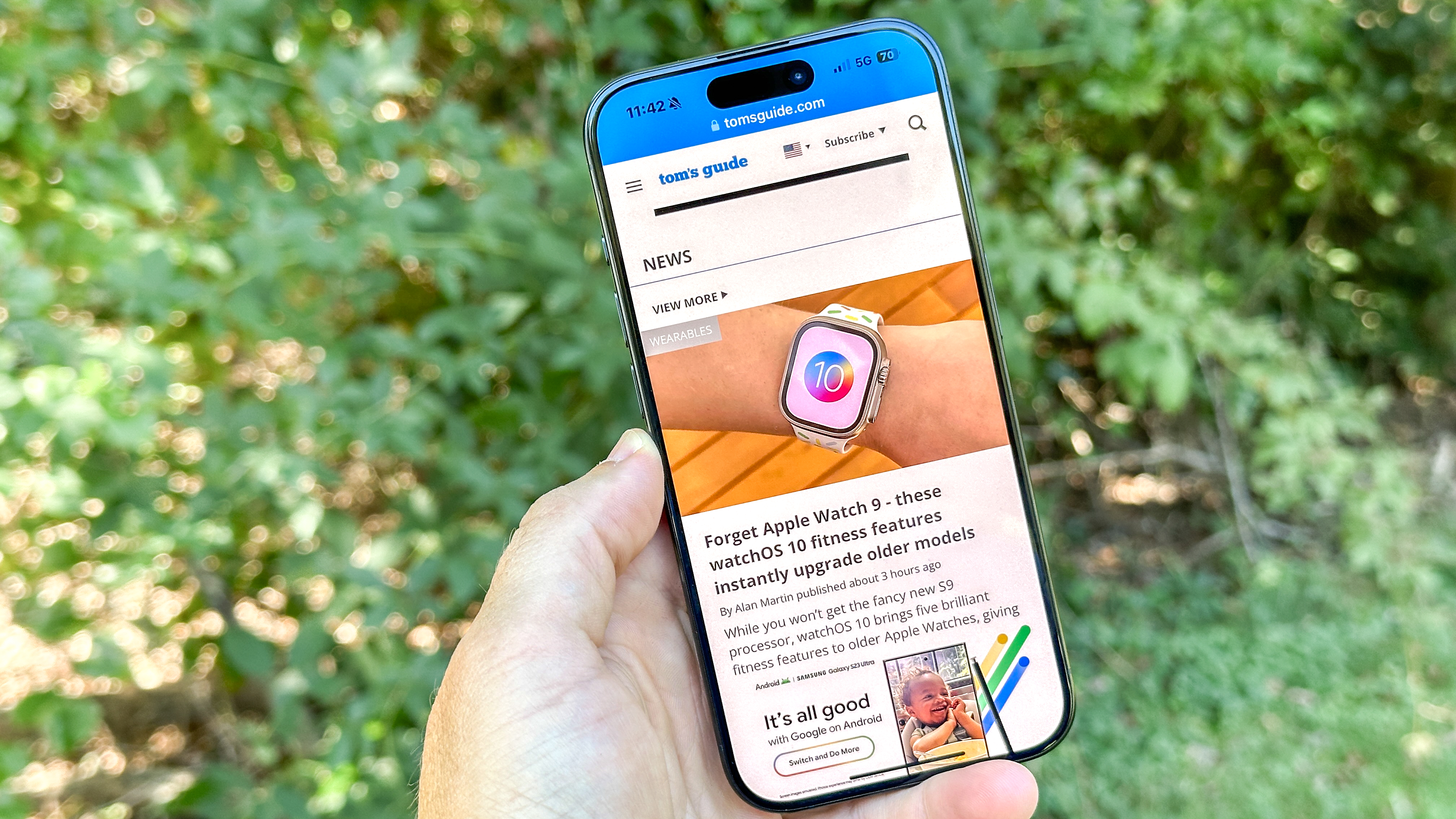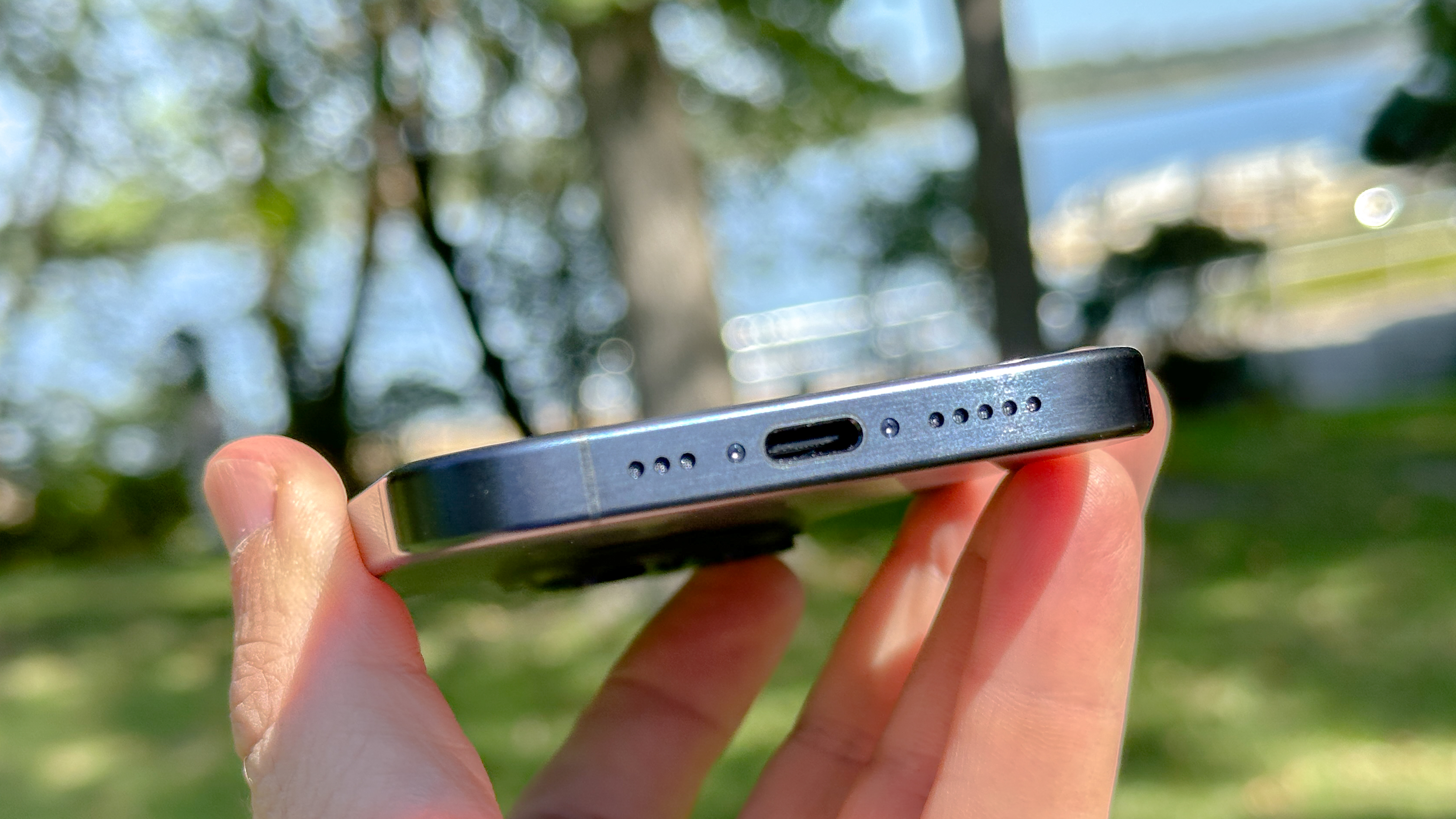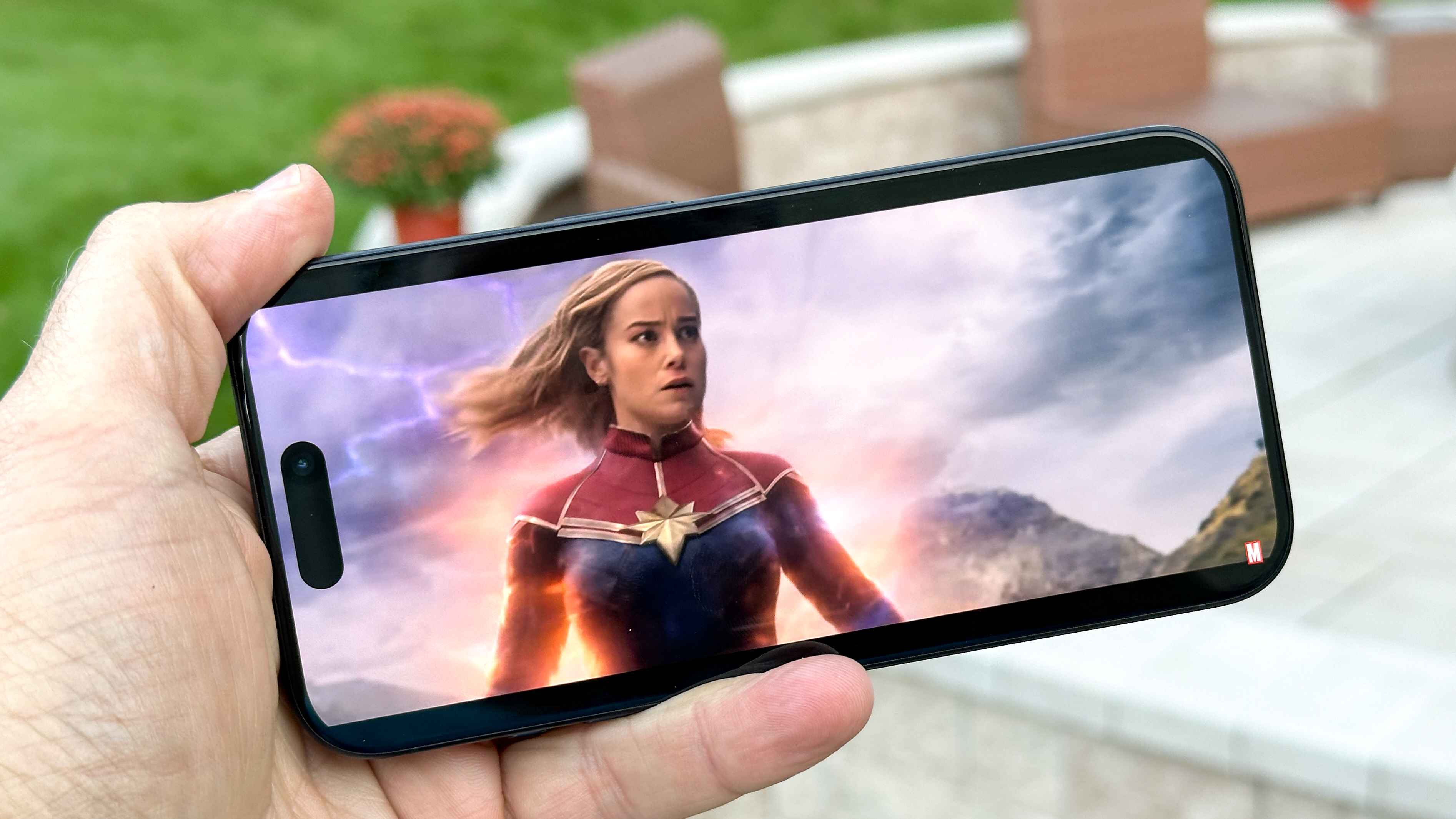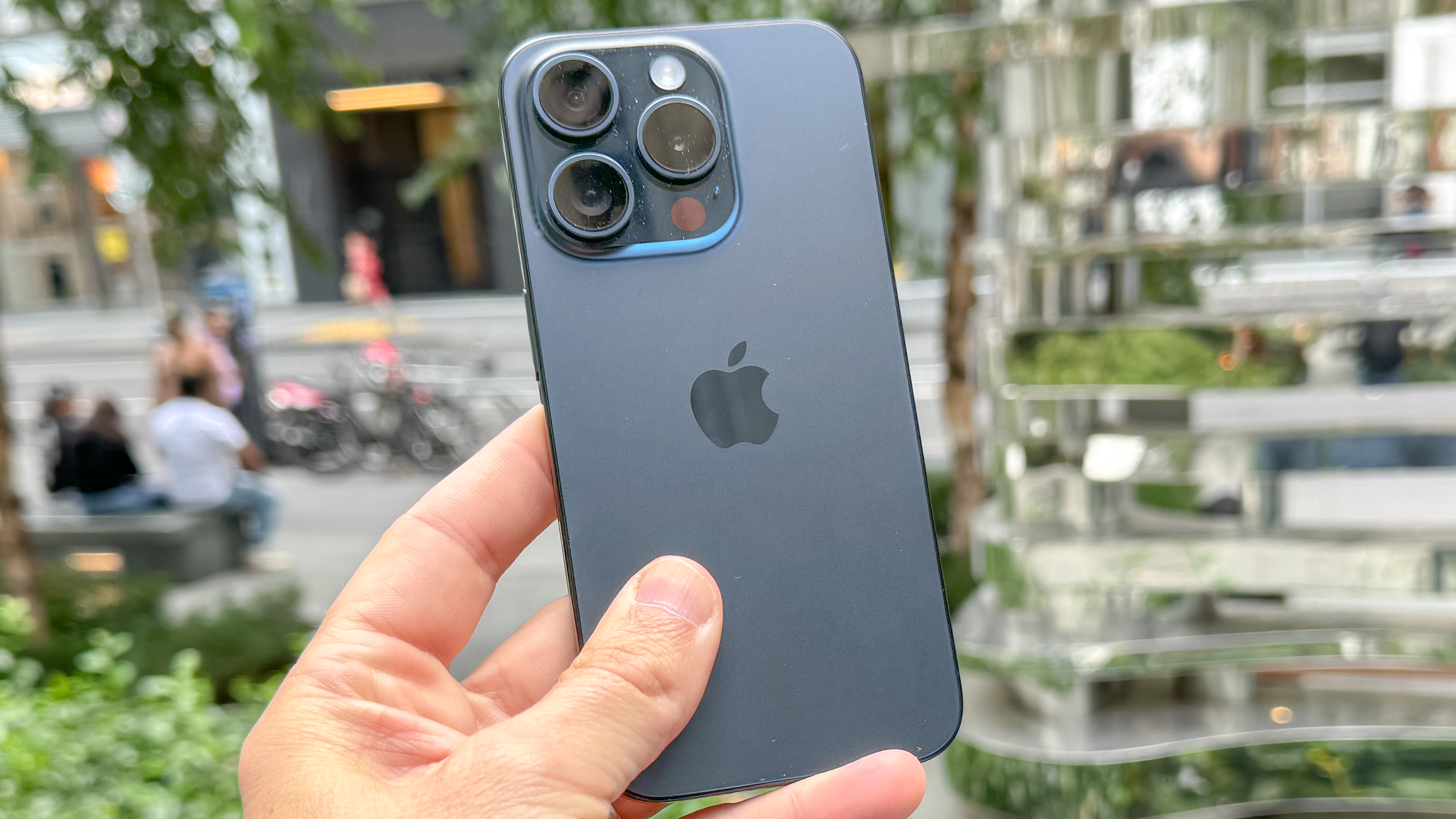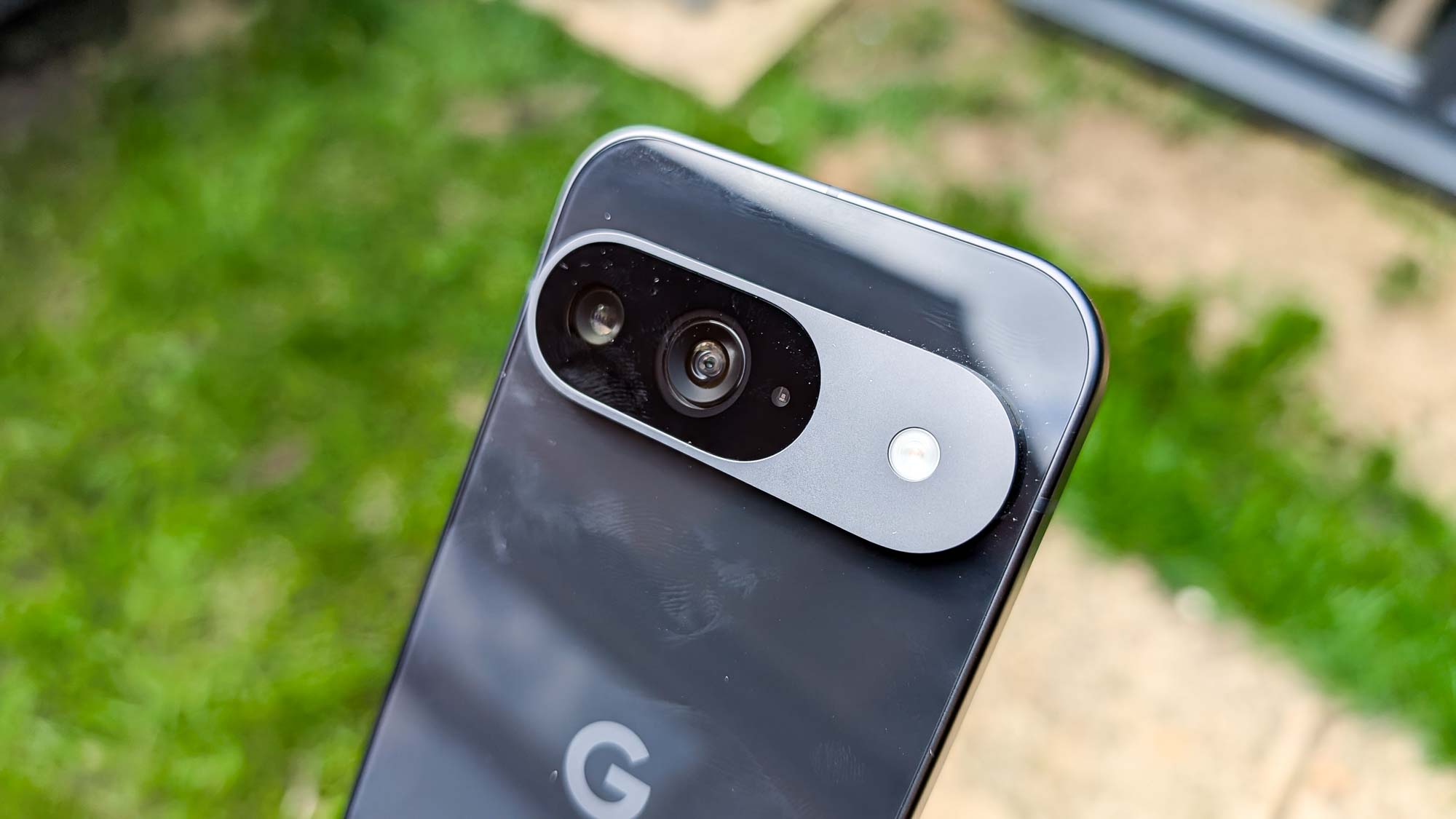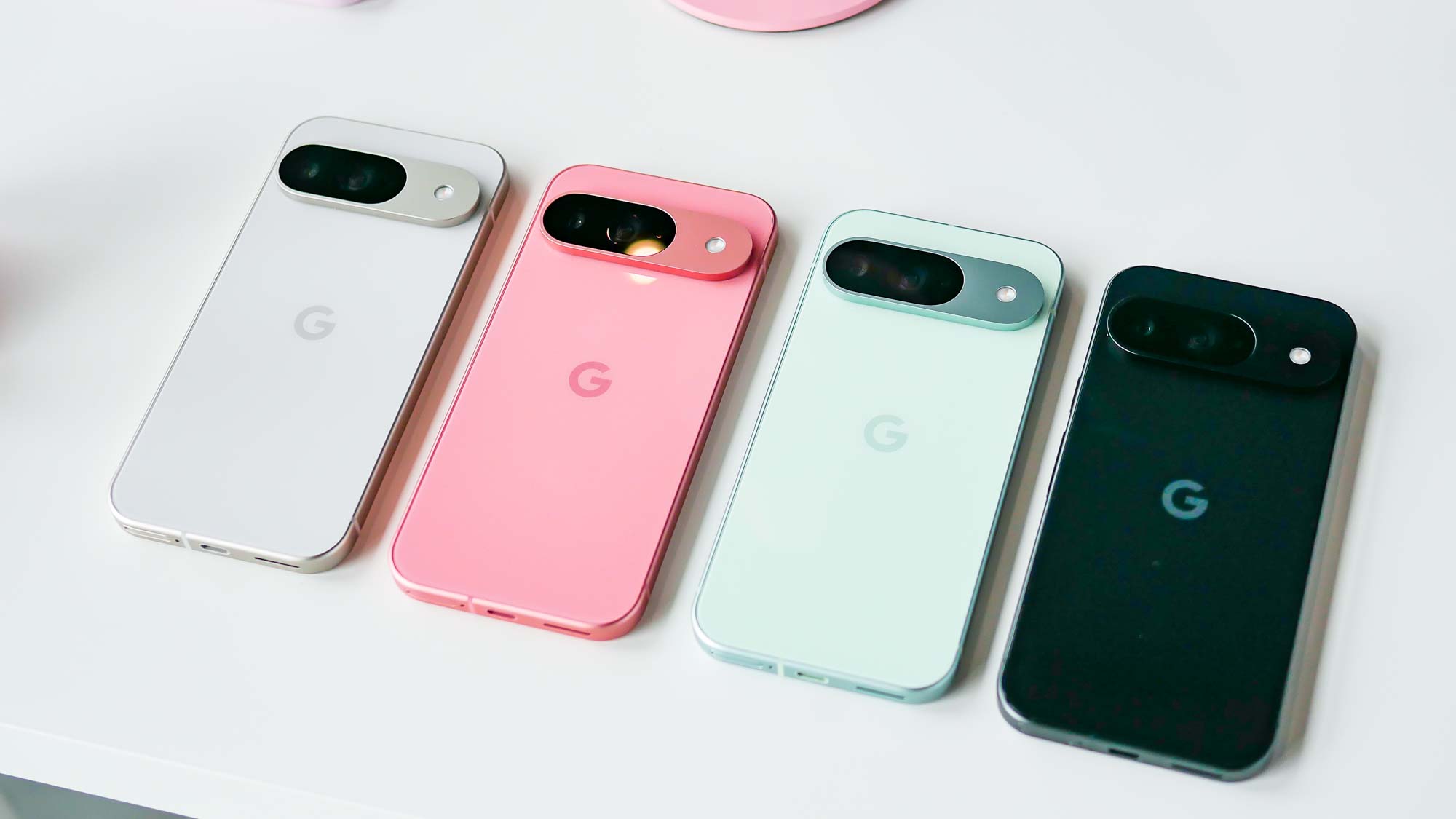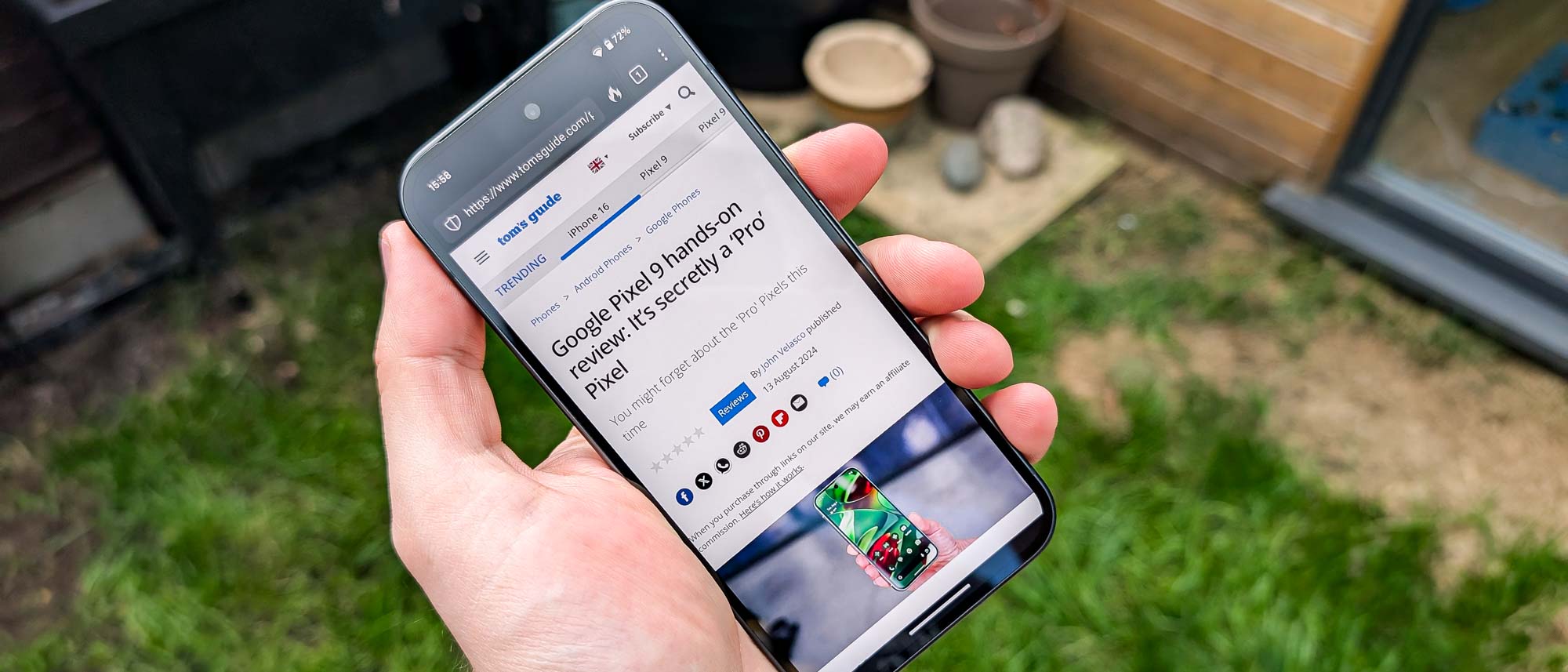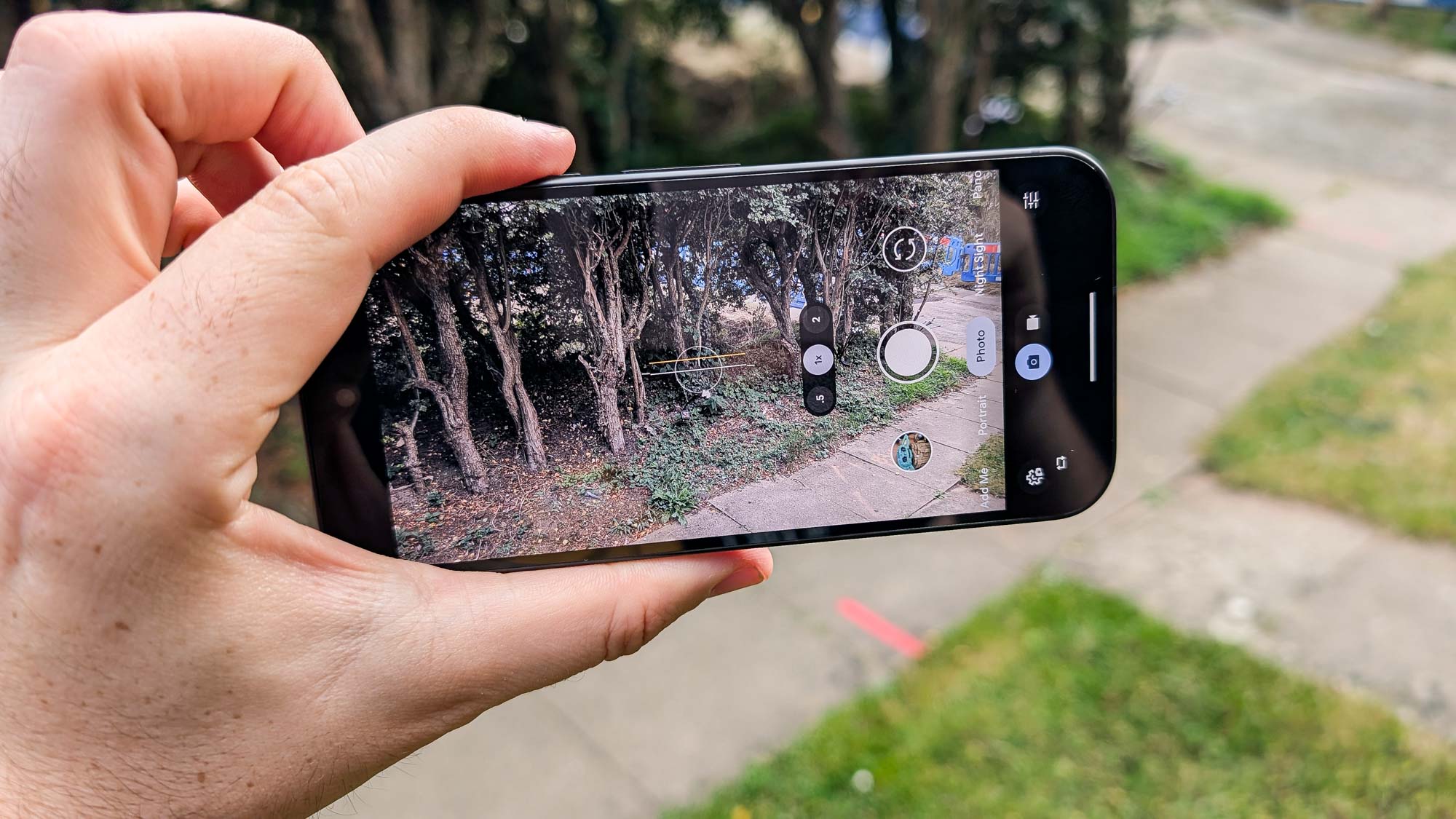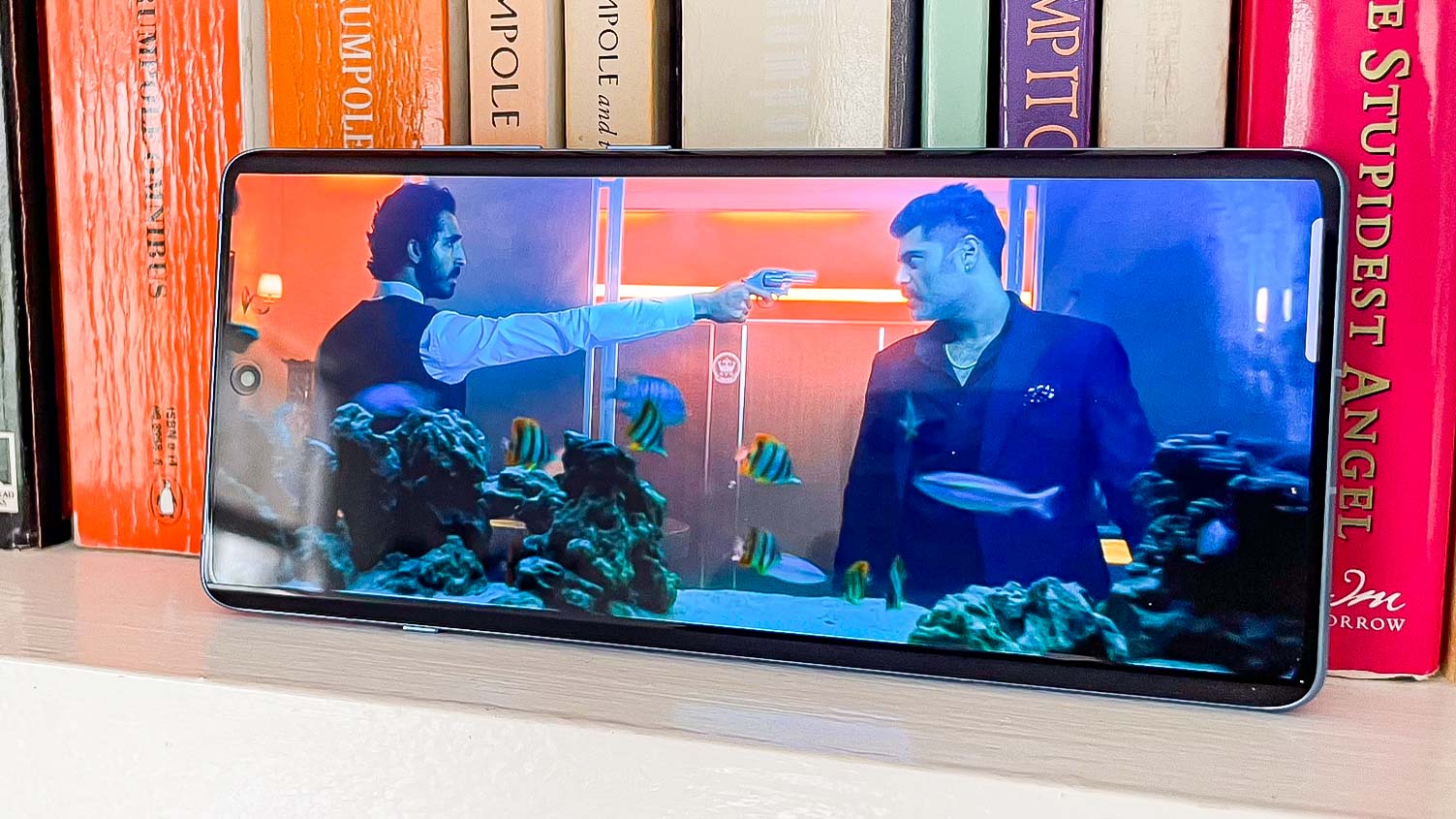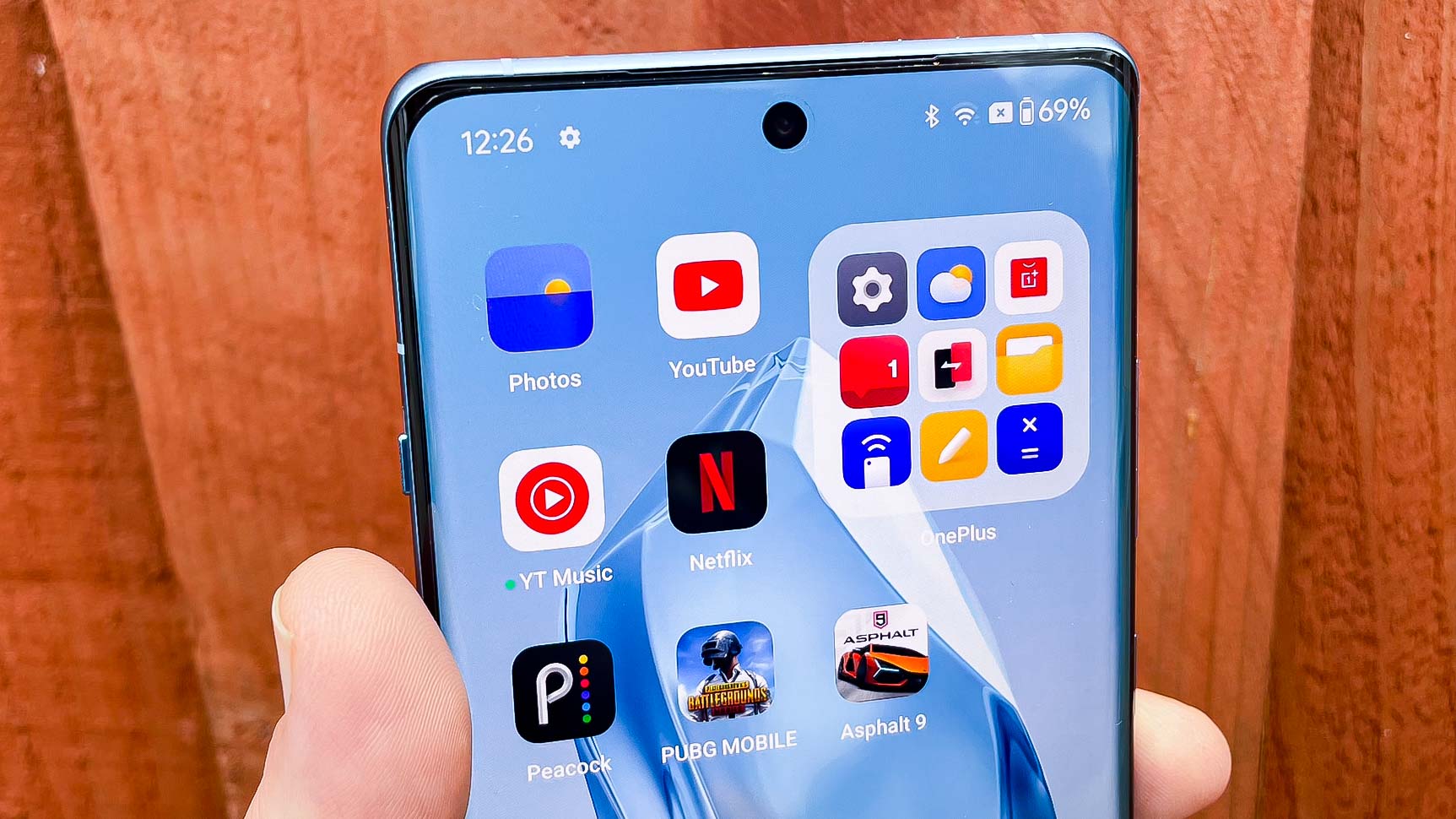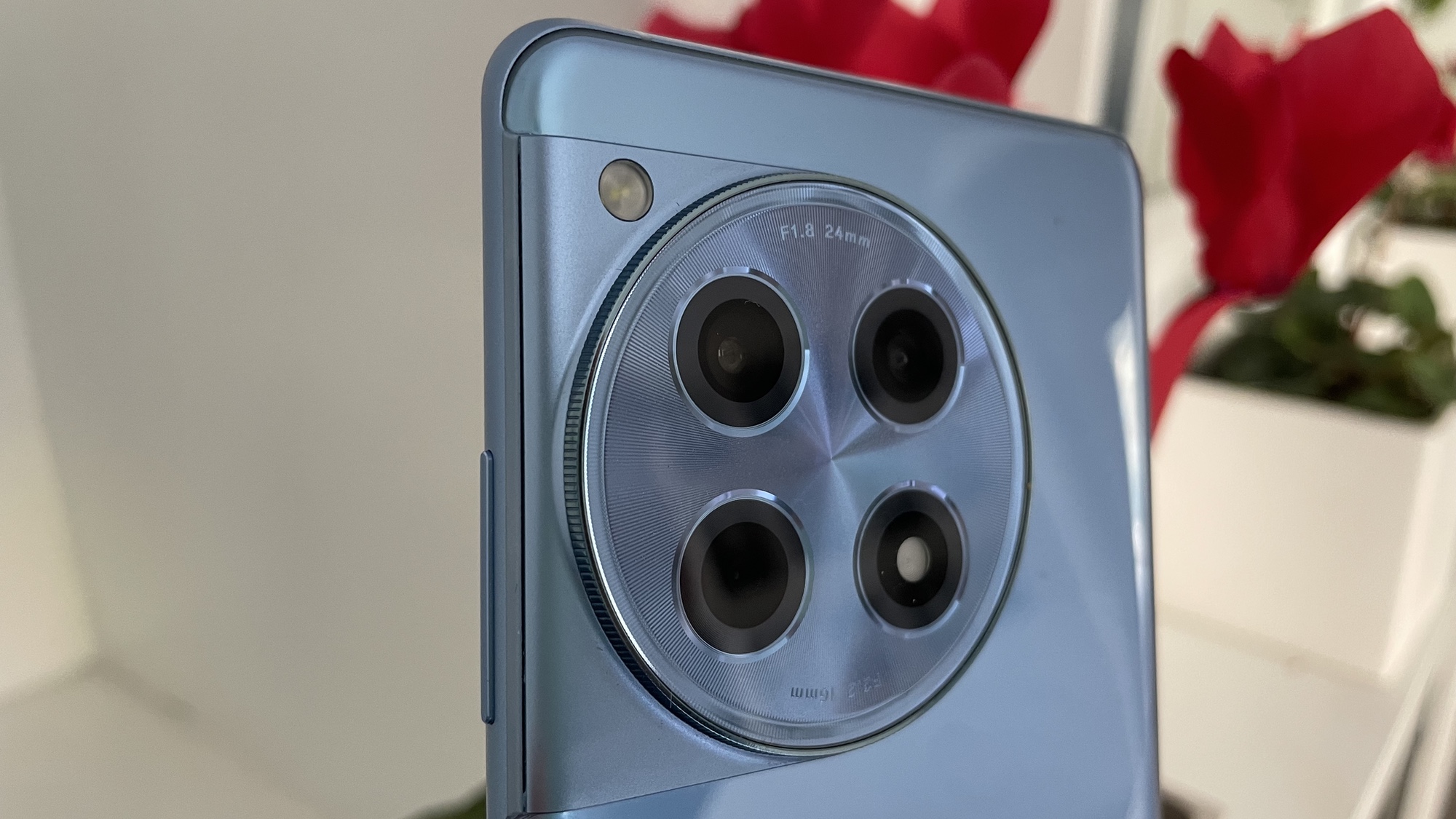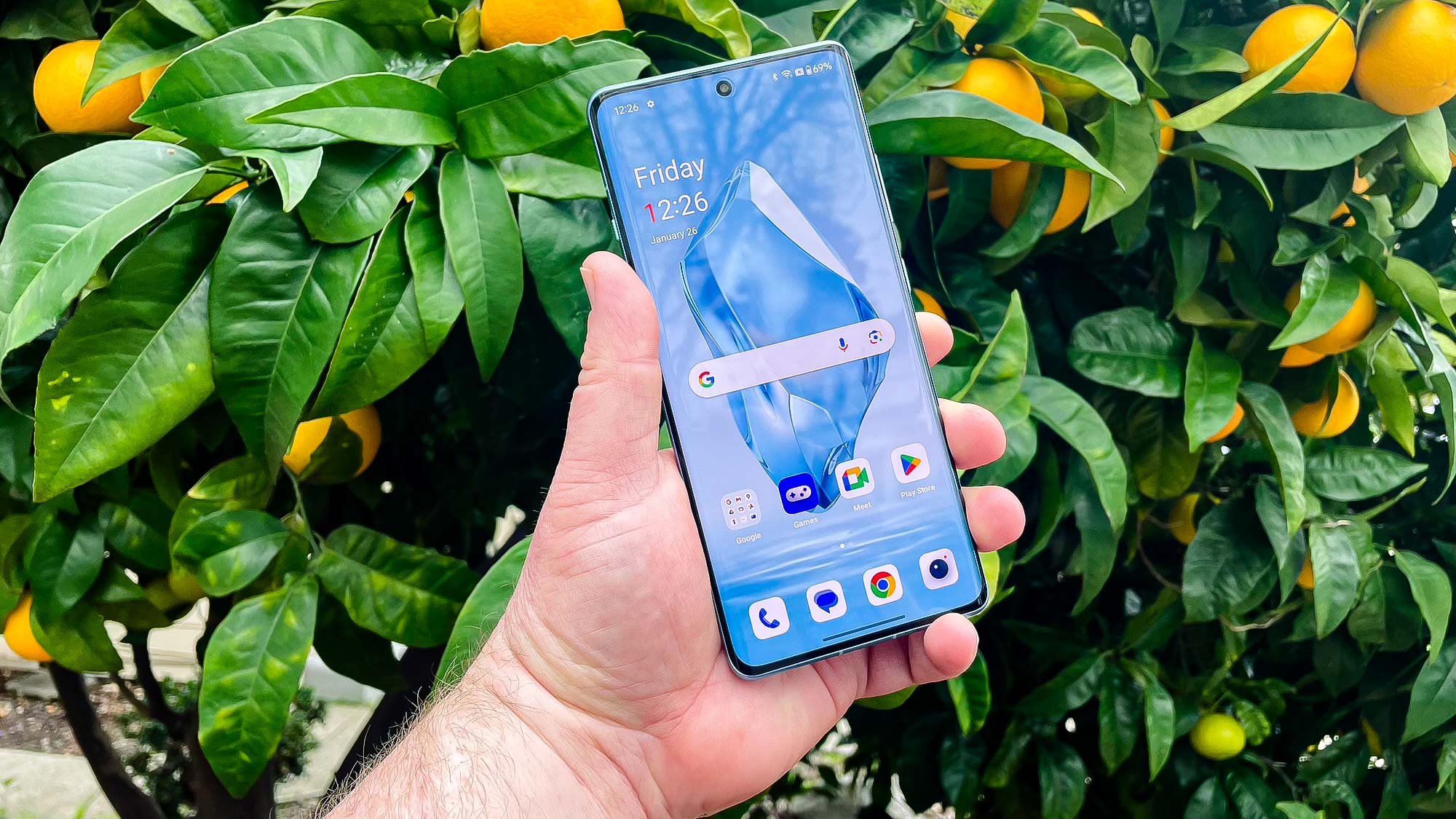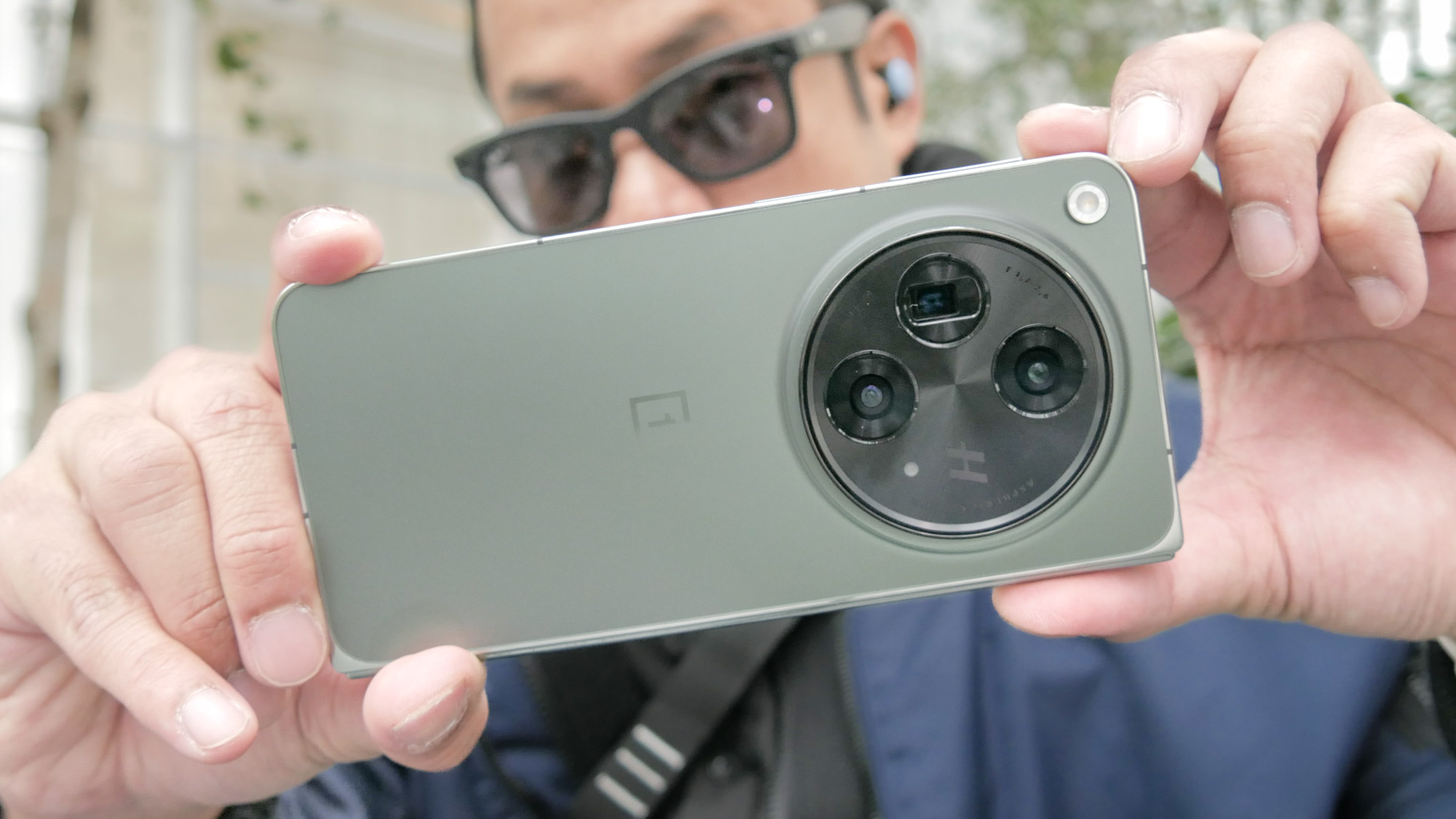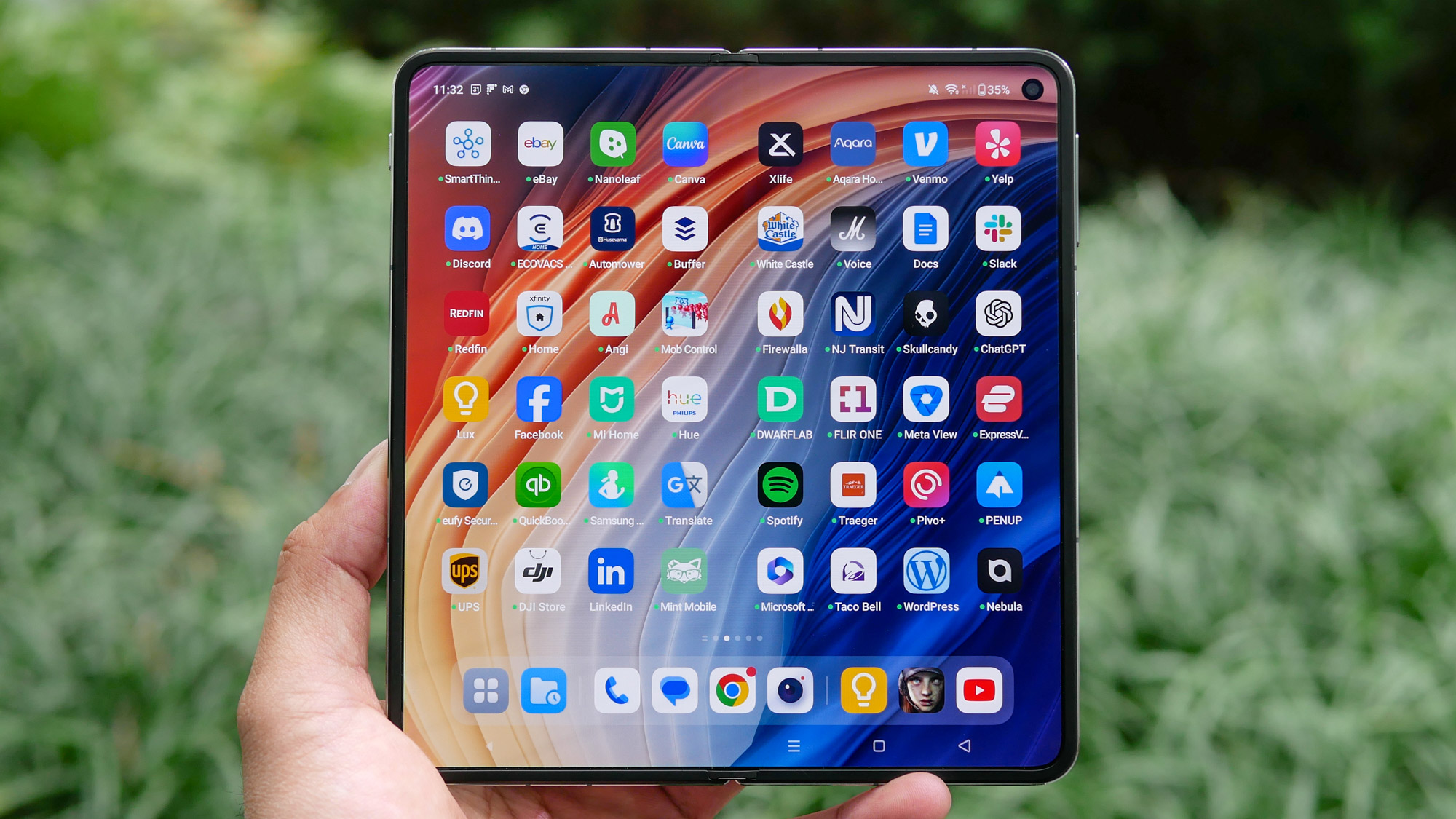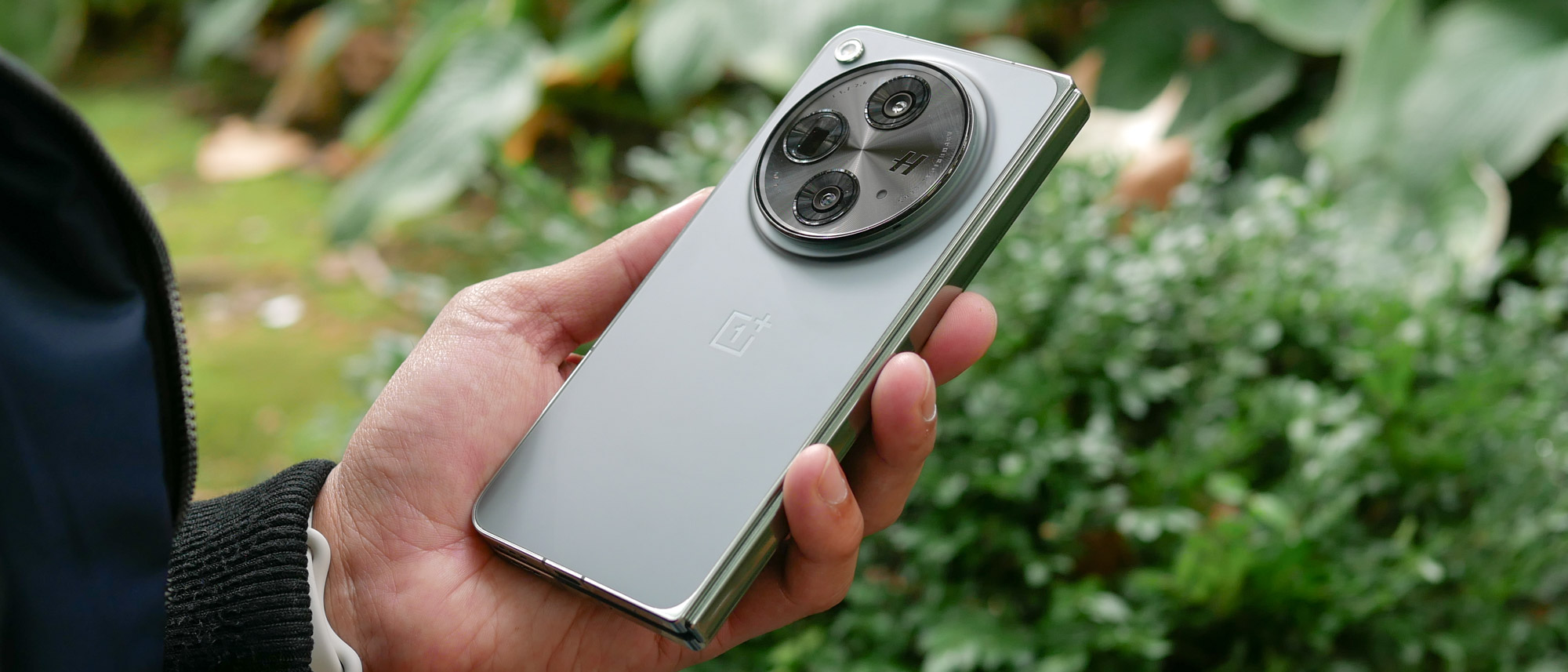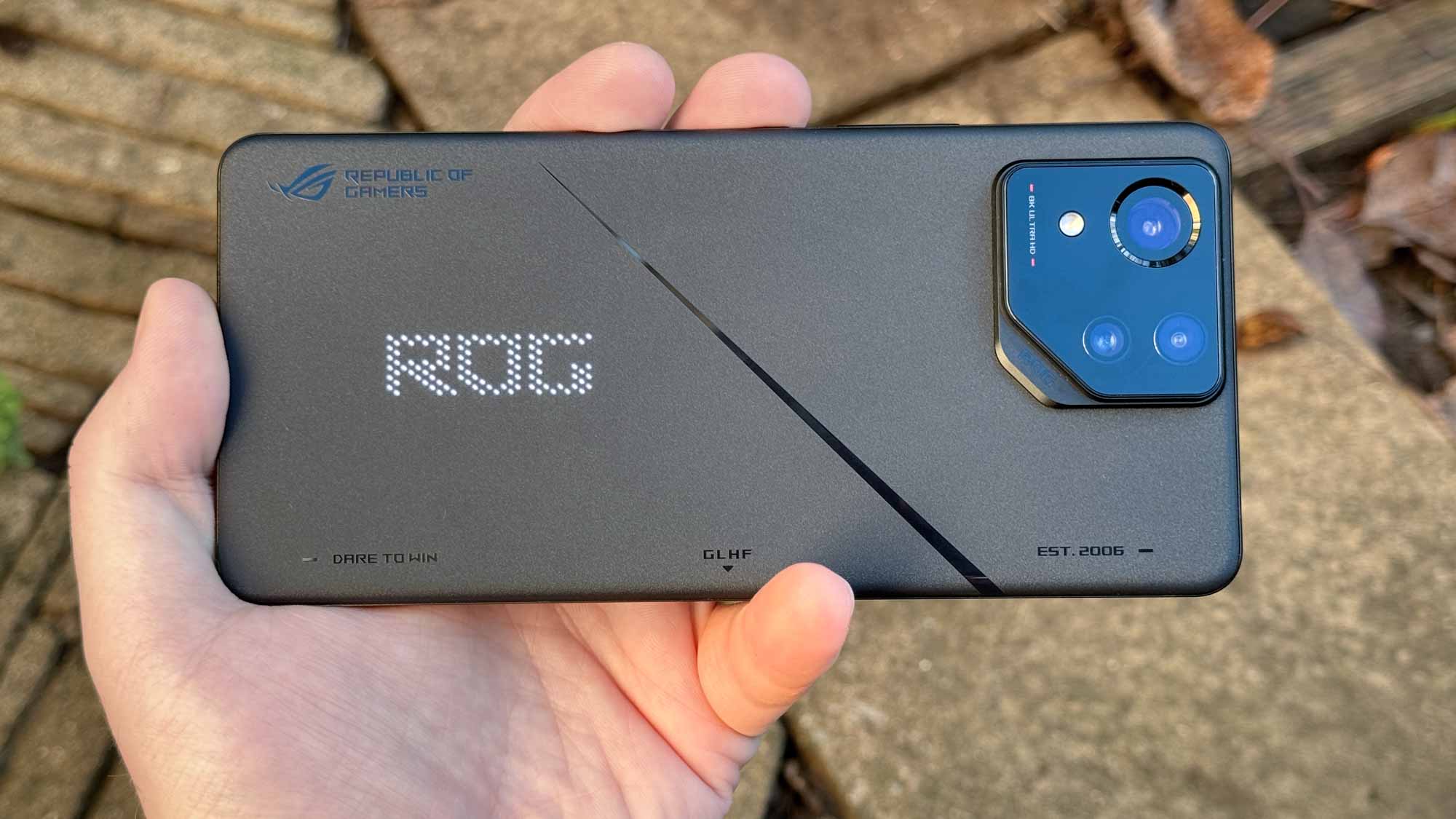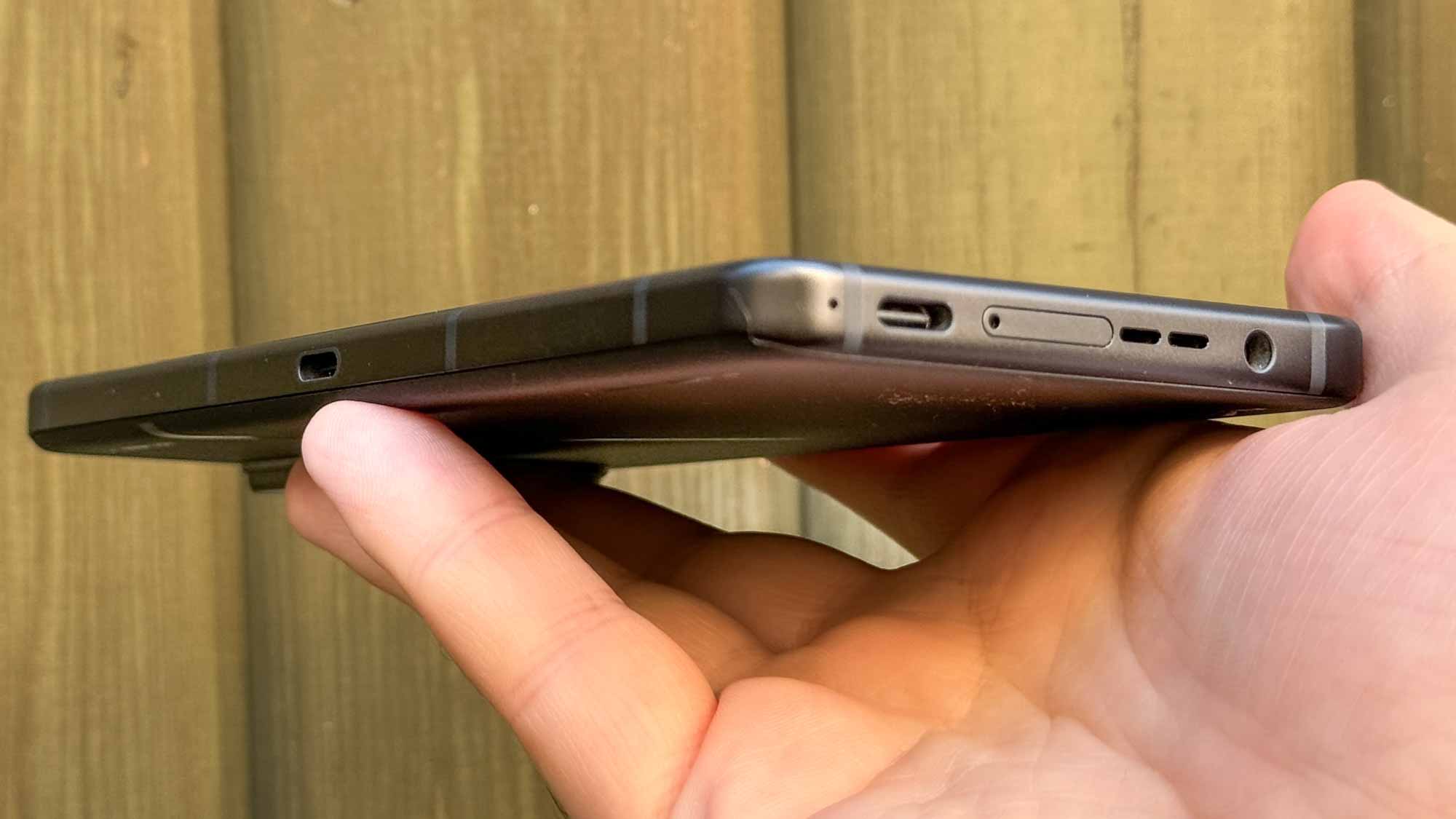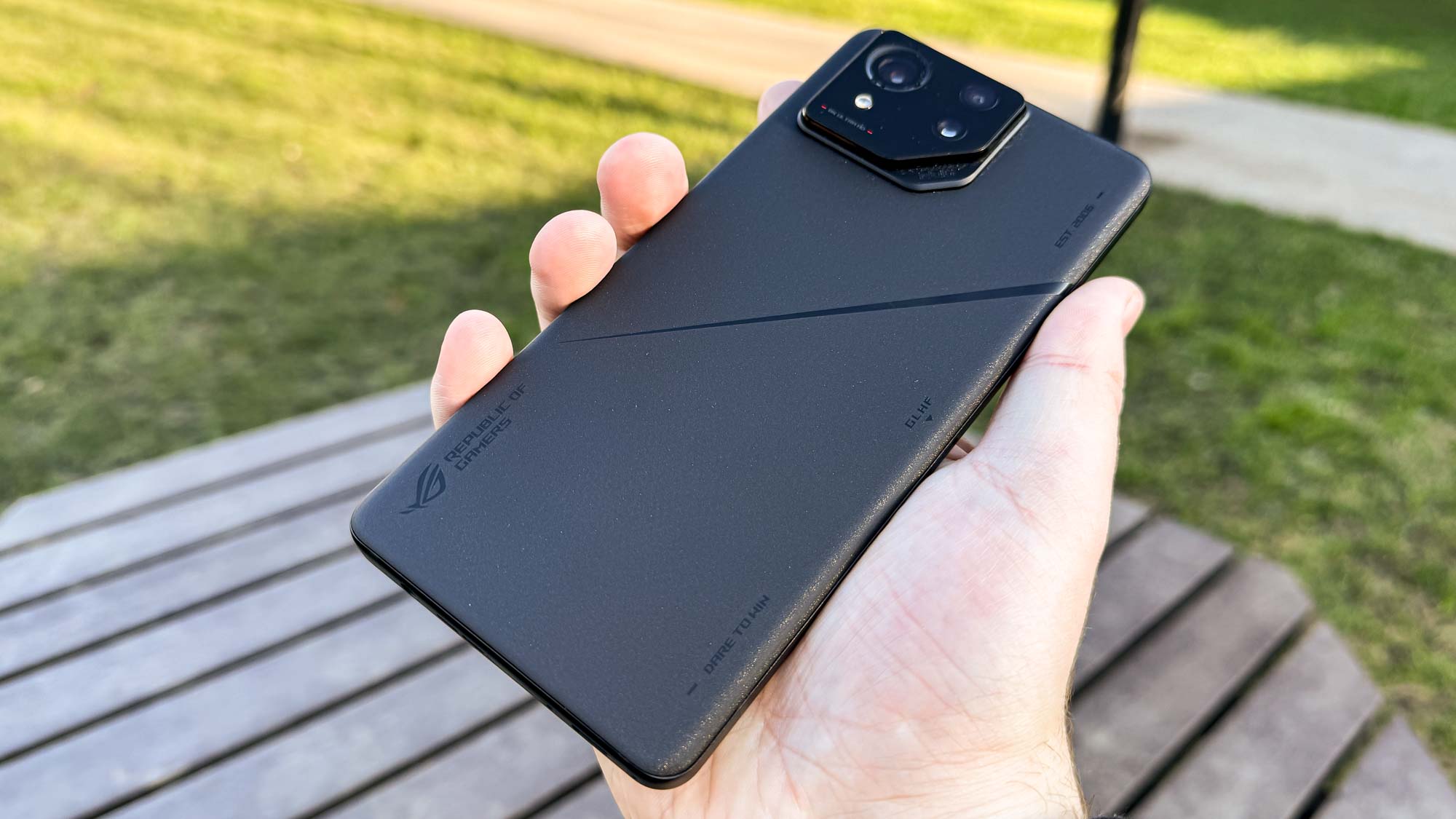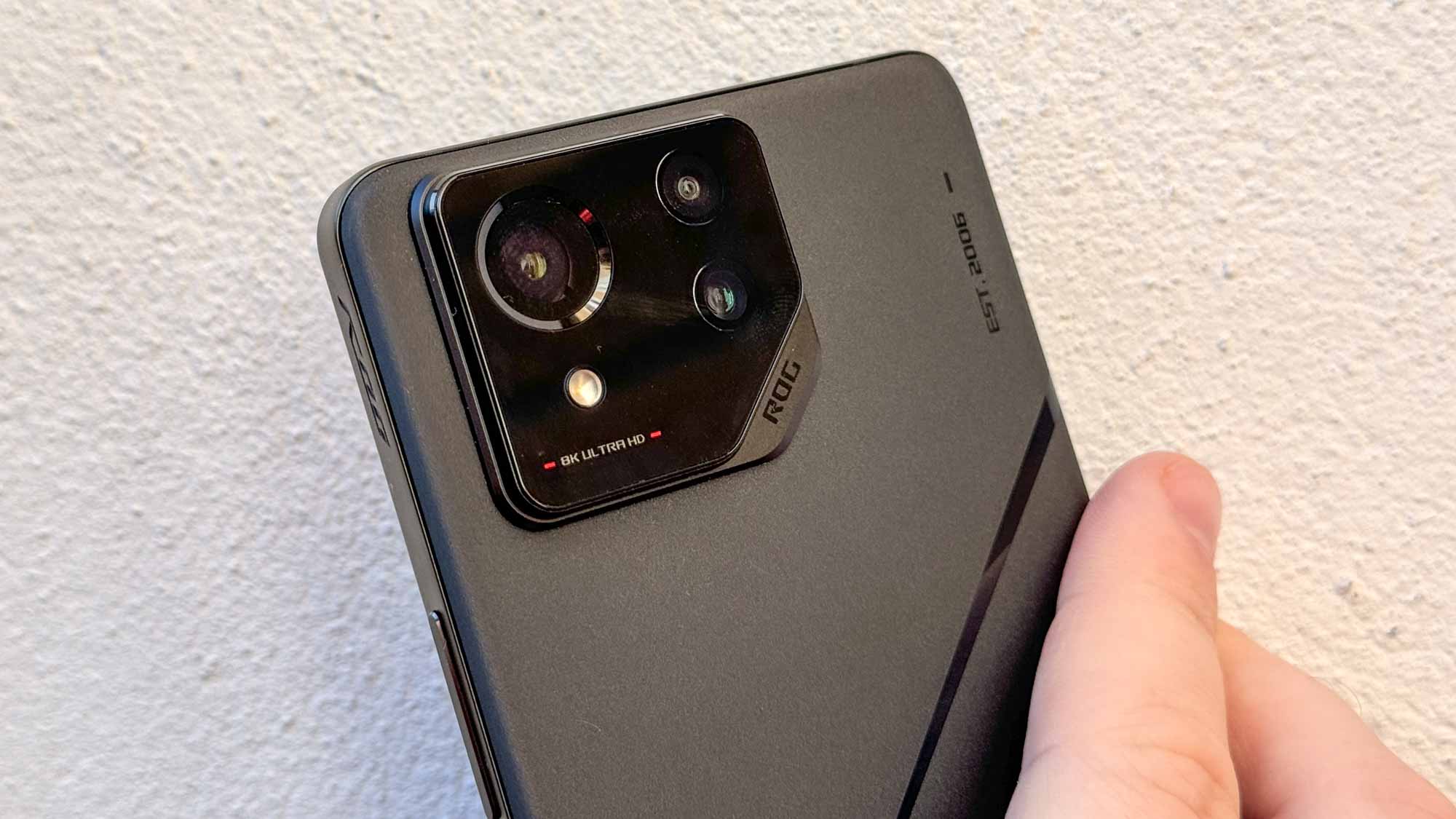If you were to ask me to recommend the best phone overall right now, I’d normally steer you toward the iPhone 15 Pro Max. But with Apple’s fall product event happening next week, it’d be better to hold off on buying a new phone until you see what Apple has to offer. There’s every chance the iPhone 16 models coming out next week could improve on Apple’s current device and even outperform the Samsung Galaxy S24 Ultra, which nearly matches the iPhone on the photo front while adding some clever AI-powered features.
This is one of the busiest times of the year for smartphones, as device makers roll out their latest handsets to get them on retail shelves in time for the holidays. In addition to Apple’s upcoming launch, we’ve just seen Google release new handsets, with some of the Pixel 9 models landing in our best phone rankings. One of those Google phones, the Pixel 9 Pro Fold goes on sale this week, so stay tuned for our full review.
With all these phones coming out, we’re constantly re-evaluating the smartphone scene to help you find the best device for your needs. We base our picks on testing and head-to-head comparisons between the dozens of phones that come into our lab each year. I’ve been reviewing phones since the first iPhone arrived in 2007, and when you take into account the background of the other Tom’s Guide phone team members, we’ve got more than four decades of experience evaluating phones from every possible angle.
The very best phones offer great cameras, enough performance to easily multitask or play intensive games and the kind of battery life to last the whole day. We test each one of those things for every smartphone we review — and we also look at software, display quality and phone design.
The end result is this list of 10 smartphones. Our best phones picks include options at a wide range of prices that have impressed me and the rest of the Tom’s Guide reviewers.

I’m the managing editor for mobile at Tom’s Guide, where I’ve been working since 2015. In total, I’ve covered technology for more than 20 years, and I was there when Steve Jobs showed off the original iPhone back in 2007. I’ve been looking at and testing phones since that day, and if you visit my Northern California home, you can marvel at the stacks of hones I keep handy for head-to-head testing.
The best phone overall
The iPhone 15 Pro Max is the best iPhone we’ve tested, and that’s because it has everything you could want in a flagship, offering features you won’t even find on the iPhone 15 Pro. The design has been made lighter and more premium with titanium sides, the A17 chipset inside the device is more powerful than any Apple silicon before it, and the camera array gets some improvements, too. If you can swing the $1,199 starting price, the iPhone 15 Pro Max represents the best of what Apple has to offer.
Price and value: While this model costs $100 more than the starting price of the iPhone 14 Pro Max, Apple has increased the amount of base storage to 256GB. The iPhone 15 Pro offers almost all the same features as the Pro Max, but in a smaller body and for a lower starting price. And if it’s a big screen you’re after, there’s the iPhone 15 Plus to consider, too. As for Samsung’s comparable device, the Galaxy s24 Ultra saw a price hike, too, so Apple’s top device remains the less expensive option.
Camera performance: iPhones live and die by their cameras, and the telephoto lens on the iPhone 15 Pro Max is a big improvement over previous Pro Max models, thanks to its 5x zoom capabilities. Its low-light performance is pretty spectacular too. That said, the Galaxy S24 Ultra still has the better zoom feature even if we think the iPhone 15 Pro Max is the best camera phone overall.
Battery and charging: The battery on the iPhone 15 Pro Max lasts more than 14 hours on our battery test, an impressive jump over the already long-lasting iPhone 14 Pro Max. If only the phone could charge quickly, as Apple continues to offer only 27W wired charging and 15W wireless charging.
Overall performance: Qualcomm’s Snapdragon 8 Gen 3 chip now beats the iPhone on some tests, but the A17 Pro chipset powering the iPhone 15 Pro Max remains a very fast chip. You’ll notice the extra oomph when you’re performing everyday tasks and switching between apps. For all the Snapdragon’s gains in graphics, the iPhone 15 Pro Max still outperforms the latest Galaxy device when it comes to real-world tasks like video transcoding. A17 Pro-powered phones like the iPhone 15 Pro Max will be able to support the Apple Intelligence features Apple is rolling out later this year.
Verdict: The iPhone 15 Pro Max is tops for design, photography and performance. Charging speed and digital zoom features could be further refined, and it’s very expensive. But it’s still a remarkable device worthy of an upgrade.
Read the full review: iPhone 15 Pro Max
| Attributes | Notes | Rating |
|---|---|---|
| Price | This is the most expensive iPhone Apple sells. You can save $200 with the iPhone 15 Pro, if you don’t mind the more limited telephoto lens. | ★★★☆☆ |
| Cameras | The iPhone 15 Pro Max is one of the best camera phones we’ve tested in the past year, though both the Pixel 9 Pro and Galaxy S24 Ultra beat it on zoomed shots. | ★★★★☆ |
| Performance | Snapdragon 8 Gen 3-powered phones may have caught up to Apple’s silicon, but the A17 Pro remains a top performer. | ★★★★★ |
| Battery life | You won’t need to charge your phone up during the day. The iPhone 15 Pro Max is the second longest-lasting iPhone we’ve ever tested, finishing just behind the iPhone 15 Plus. | ★★★★★ |
More on the iPhone 15 Pro Max
Best Samsung phone
The Galaxy S24 Ultra offers the peak Android experience, with the kind of improvements you’d demand for such a premium phone — a better processor, a brighter display and camera fine-tuning. But this year’s model stands out with the arrival of Galaxy AI features, which tap into artificial intelligence to handle tasks like translation, transcription and summaries. This may be Samsung’s first attempt at putting AI front and center, but tools like Circle to Search and notes auto-formatting already feel very polished. And more importantly, they’re integrated into your everyday phone usage.
Price and Value: Though its price has gone up by $100 over the previous generation, you still get what you pay for with the Galaxy S24 Ultra. especially if you can find a lower price through the best Galaxy S24 Ultra deals. Seven years of software and security updates helps justify the cost.
Camera performance: Swapping out a 10MP telephoto lens with a 10x zoom for a 50MP shooter with a 5x zoom feel like a step back, even with the higher-resolution photos. (At least you can still enjoy 10x zooms by cropping down those 50MP shots. And the 100x Space Zoom feature is as impressive as before.) Nevertheless, the Galaxy S24 Ultra remains a top camera phone, with a better handle on color than previous Samsung flagships.
Battery and charging: The Snapdragon 8 Gen 3 powering the Galaxy S24 Ultra is very efficient,, helping the S24 Ultra last for 16 hours and 45 minutes on our battery test. Wired charging speeds remain at 45W, which is good but slower than the OnePlus 12 and its 80W charging speeds.
Overall performance: In addition to its power management features, that Snapdragon 8 Gen 3 silicon delivers stellar performance — enough to beat the iPhone 15 Pro models in some tests, particularly when it comes to graphics. Unlike other S24 models, which use different chipsets depending on their region, every Galaxy S24 Ultra uses a Snapdragon 8 Gen 3, so you’re guaranteed the best Android performance no matter where you live in the world.
Verdict: The Samsung Galaxy S24 Ultra gives the iPhone 15 lineup all it can handle, lasting longer than Apple’s phone on a charge and outperforming even the iPhone 15 Pro Max on several benchmark tests. Throw in seven years of software updates and smart AI features, and this is a phone that delivers on value.
Read the full review: Samsung Galaxy S24 Ultra
| Attributes | Notes | Rating |
|---|---|---|
| Price | Samsung raised the price on the Galaxy S24 Ultra by $100 over the S23 Ultra. This is the most expensive phone that doesn’t fold. | ★★☆☆☆ |
| Cameras | The hardware that makes up the S24 Ultra’s camera array impresses, but Samsung augments that with some great AI-powered features that help you edit and fine-tune your photos. | ★★★★☆ |
| Performance | Forget about a performance gap with the iPhone. The Snapdragon 8 Gen 3 holds its own against any phone, particularly in terms of graphic pefromance. | ★★★★★ |
| Battery life | This is Samsung’s longest-lasting phone, beating the latest iPhone models by 2 hours on our battery test., | ★★★★★ |
More on the Samsung Galaxy S24 Ultra
Smartest phone
The Google Pixel 9 Pro brings Google’s usual mix of great camera features and AI-powered tools, with more of a focus on the latter this time around. You’ll also get a smaller display — Google says customers wanted a more compact version of the Pro to go with the big-screen model. (If you prefer more screen real estate, consider the Pixel 9 Pro XL, which has the exact same features as the regular Pro, but a 6.7-inch display and bigger battery, instead.)
Price and Value: On the one hand, the Pixel 9 Pro costs the same $999 that Google charged for the Pixel 8 Pro. But that older phone had a larger screen, making you feel that you’re paying more for less phone. Still, with the improvements to battery life and display brightness — not to mention the new AI features — you’re getting plenty of value for your money.
Camera performance: Camera improvements are modest — a new ultrawide sensor adds a Macro mode that performed very well in our testing. The front camera gets an upgraded sensor, too. Otherwise, the Pixel 9 Pro’s camera performance lives on the strength of its photo processing, which turned out some very strong photos during our camera tests.
Battery and charging: Camera improvements are modest — a new ultrawide sensor adds a Macro mode that performed very well in our testing. The front camera gets an upgraded sensor, too. Otherwise, the Pixel 9 Pro’s camera performance lives on the strength of its photo processing, which turned out some very strong photos during our camera tests.
Overall performance: The Tensor G4 that powers the Pixel 9 Pro can’t keep pace with other top Android phones in benchmark testing, and it trails the iPhone 15 models, too. But that’s not the focus of Tensor. Instead, it powers a number of helpful AI features, including Pixel Screenshots for easy searches of content within screenshots, Add Me for inserting people into group shots and Call Notes for transcriptions and summaries of phone calls. Potentially, the best addition is Gemini Live, a smarter version of the Google Assistant. Pixel 9 Pro owners get a year of Gemini Advanced for supporting for complex features.
Some of the AI tools need some more polish, which we would guess will come over time. Right now Pixel Screenshots is the most useful if you take a lot of screenshots in order to remember important details. The Pixel Studio generative AI tool is also adept at producing images just using your text prompts.
Verdict: If you’re willing to bet that the Pixel 9 Pro’s AI features will improve over time, the camera performance, longer battery life and bright display should be enough to give you a great device right now.
Read the full review: Google Pixel 9 Pro
| Attributes | Notes | Rating |
|---|---|---|
| Price | On the bright side, the Pixel 9 Pro costs the same $999 as the Pixel 8 Pro. But you’re paying the same for a smaller screen. | ★★★☆☆ |
| Cameras | You’ll find few hardware changes outside an improved ultrawide sensor and higher-resolution selfie cam, but the Pixel 9 Pro still takes great shots. And the AI features are second to none. | ★★★★☆ |
| Performance | The Tensor G4 enables a bunch of new AI-powered features that make the Pixel 9 Pro standout. But it badly lags behind Samsung and Apple phones in terms of speed. | ★★★☆☆ |
| Battery life | We’ve finally got a series of Pixels that outlasts the average smartphone, with the Pixel 9 Pro beating the average result on our test by 3 hours. | ★★★★☆ |
More on the Google Pixel 9 Pro
Best under $500
Like the Pixel 7a it replaces, Google’s Pixel 8a is the best phone to get when you refuse to spend more than $500. In exchange, you’ll get one of the best camera phones for the price, along with the AI features found on current Pixel flagships. The only reason to pass on the Pixel 8a at this point is that Google will soon launch the Pixel 9 flagships, introducing new AI capabilities. But the Pixel 8a remains a great option for bargain hunters.
Price and value: In addition to saving you $200 to $300 for flagship level features, the Pixel 8a also figures to be a phone you can hold on to for a long time. Google now offers seven years of software and security updates, matching the level of support the regular Pixel 8 phones get. With the Pixel 8a, Google is showing other phone makers how a midrange device should be.
Camera performance: You’ll find the same cameras on the Pixel 8a as you did on the Pixel 7a, and photo processing capabilities work the same, too. While we wish there were more substantial improvements, you can’t knock the camera performance of the Pixel 8a, especially compared to other camera phones in this price range. You may not want to upgrade from last year’s phone, but people with older phones will still be impressed with the quality of images produced by the Pixel 8a.
Battery and charging: At last, Google has made a phone that lasts longer than the average handset on a charge. The Pixel 8a turned in a time of 11 hours and 21 minutes on our battery test, the best result we’ve seen in a while from a Pixel. We only wish charging speeds were faster, but at least you get wireless charging support.
Overall performance: As always, the story with Pixel phones is the AI features supported by the Tensor core on Google’s silicon. With a Tensor G3 running the show, the Pixel 8a matches the feature set found on Pixel 8 flagships, with Magic Editor and Best Take photo-editing features stealing the show. But don’t sleep on the phone’s call management features, either. That said, if you’re looking for raw performance power, you won’t find it on the Pixel 8a, as Tensor chips lag behind what the Snapdragon silicon in Android phones can provide.
Verdict: The Pixel 8a is a worthy addition to the A series, with excellent cameras for a budget phone. With better battery life than before and extended software support, Google’s midrange phone is a even better bargain than its predecessor.
Read the full review: Google Pixel 8a
| Attributes | Notes | Rating |
|---|---|---|
| Price | Google kept its midrange phone under $500, making the Pixel 8a one of the better values you can find if you don’t want to pay flagship prices. | ★★★★☆ |
| Cameras | The Pixel 9 cameras perform better than the Pixel 8a’s, but not so much that you’re sacrificing a great camera phone by paying less. This is the best cheap camera phone you can buy. | ★★★★☆ |
| Performance | The Pixel 8a uses last year’s Tensor G3, so you miss out on newer features (for now), but it’s still a pretty smart chip with unique AI features. | ★★★★☆ |
| Battery life | You’ll get better than average battery life with the Pixel 8a, though it doesn’t last as long as Google’s Tensor G4-powered phones. | ★★★★☆ |
More on the Google Pixel 8a
Best iPhone value
The iPhone 15 can’t match the iPhone 15 Pro Max for features, but it also costs $400 less. It’s the most affordable device in the iPhone 15 lineup, and it delivers solid performance and high-quality photos. While it’s frustrating to see iPhone 15 features like the display refresh rate stuck at a pedestrian 60Hz, this is still a great phone for all but the most demanding users.
Price and value: The $799 starting price of the iPhone 15 is still a considerable amount of money, compared to midrange phones. But with the iPhone 15 Pro starting at $999 and the iPhone 15 Pro Max costing even more, that $799 price tag represents a good value in Apple World. It’s a definite step up from the iPhone 14.
Camera performance: With the addition of a 48MP main camera to this year’s entry-level flagship, Apple’s unlocked a lot of photography potential in the iPhone 15. The phone can now take more detailed 24MP shots rather than the 12MP standard of previous iPhones. The iPhone 15 can now also use a lossless 2x zoom mode without needing a telephoto camera too, which helps bridge the gap between itself and the Pro models. In our iPhone 15 vs. Galaxy S24 zoom face-off, Apple’s phone held its own.
Battery and charging: Apple’s larger iPhones have more room for bigger batteries but the iPhone 15 still lasts over 11 hours on a single charge. Charging is pretty slow though, with 20W wired speeds still in place from older models.
Overall performance: The A16 Bionic chipset within the iPhone 15 is still potent, even if it first debuted on 2022’s iPhone 14 Pro models. At least the A16 still beats the latest Snapdragon 8 Gen 2-powered Android phones on many benchmarks, though Snapdragon 8 Gen 3 phones have since surpassed it. From multitasking to graphically intense games, the iPhone 15 can handle just about anything. While the iPhone 15 will be able to run the iOS 18 upgrade coming in the fall, it doesn’t have the chipset that can support AI-powered Apple Intelligence features.
Verdict: The iPhone 15 is a better value than the iPhone 14 that came before it. We love the iPhone 15’s 48MP main camera with its 24MP photos and 2x zoom mode, the more convenient USB-C charging and still excellent performance.
Read the full review: iPhone 15
| Attributes | Notes | Rating |
|---|---|---|
| Price | The $799 price tag remains the cheapest way to get one of Apple’s flagship phones. It’s the same price Samsung and Google charge for comparable models. | ★★★★☆ |
| Cameras | The 48MP main camera does a lot, but it still can’t beat a Pro iPhone due to the lack of a dedicated telephoto lens. | ★★★☆☆ |
| Performance | Apple continues to use the previous year’s chipset in its standard iPhones. As a result, the iPhone 15 has lost some ground to Snapdragon 8 Gen 3-powered Android phones, particularly when comparing graphics performance. | ★★★☆☆ |
| Battery life | As a compact phone, the iPhone 15 is limited as to how big it can make its battery. Still, this model performed well on a battery test, beating the average smartphone by more than an hour. | ★★★★☆ |
More on the iPhone 15
Most affordable AI phone
Just as iPhone users can turn to the iPhone 15 for a cheaper way to enjoy Apple’s best features, the Galaxy S24 offers a more affordable entry point for Samsung’s flagships. In fact, the Galaxy S24 delivers the best value of Samsung’s current lineup, as it offers the same Galaxy AI feature as the S24 Plus and S24 Ultra but for a $799 starting price. The S24 will be especially attractive to fans of compact phones, as it’s comfortable to use one-handed, even with a larger 6.2-inch display.
Price and value: It’s hard to argue with a phone that delivers both a telephoto lens and Galaxy AI features for less than $800. Seven years of software and security support are even more impressive. Unless you really need a big screen or a more powerful telephoto lens, the Galaxy S24 will more than meet your needs — and you don’t have to contend with a four-figure starting price, either.
Camera performance: Very little has changed with the Galaxy S24 cameras compared to the S23, though that’s not necessarily a bad thing. Samsung’s flagships produce excellent photos, and the S24 was no exception, though some photos turned out a little dark in our testing. Samsung also includes a telephoto lens on its cheapest flagship, something Apple doesn’t do with the iPhone.
Battery and charging: With a time of 13 hours and 28 minutes on our battery test, the Galaxy S24 bests the average smartphone by 3.5 hours. The 25W charging speed is a little disappointing, as Samsung’s other S24 models continue to offer 45W charging. More to the point, the cheaper OnePlus 12 charges faster than the S24.
Overall performance: North American Galaxy S24 models run on the Snapdragon 8 Gen 3 chipset, which is good news for Samsung. That silicon produces numbers that surpass Apple’s mobile chips in some tests. Elsewhere, S24 shoppers will have to settle for the Exynos 2400 system-on-chip. Our testing found that the Exynos 2400 wasn’t as fast as the Snapdragon 8 Gen 3 on the same tests.
Verdict: The Galaxy S24 may not be Samsung’s most feature-packed flagship, but it offers a telephoto lens, Galaxy AI capabilities and — in North America, at least — a powerful Snapdragon 8 Gen 3 chipset.
Read the full review: Samsung Galaxy S24
| Attributes | Notes | Rating |
|---|---|---|
| Price | You get a lot of phone for your S799, especially now that Google’s Pixel 9 costs the same amount as Samsung’s entry-level phone. | ★★★★☆ |
| Cameras | Not many sub-$800 phones have a telephoto lens, so the Galaxy S24 stands out in that regard. It also benefits from Google AI photo-editing features. | ★★★★☆ |
| Performance | You get the same Snapdragon 8 Gen 3 chipset as the more expensive Galaxy S24 Ultra, giving you a lot of bang for your buck. | ★★★★☆ |
| Battery life | This is a big improvement over the Galaxy S23, improving on that phone’s battery test result by 3 hours. | ★★★★☆ |
More on the Samsung Galaxy S24
Best flagship value
The OnePlus 12 can hold its own against just about any Android phone, making it a compelling alternative to pricier handsets from Samsung. OnePlus continues to improve camera performance, while equipping its flagship with the best silicon available to Android devices. The OnePlus 12 is one of the longest-lasting Android flagship phones you can, and the phone features fast charging. A bigger display with impressive brightness completes the package.
Price and value: A $100 price hike over the OnePlus 11 is a bit of a bummer, but at least a very liberal trade-in program wipes out that price hike, bringing the OnePlus 12 down to a bargain $699. That’s $100 less than the Galaxy S24 and $300 cheaper than the Galaxy S24 Plus.
Camera performance: The telephoto lens can now offer a 3x zoom — it was 2x on previous OnePlus models — as the OnePlus 12 features the fourth generation Hasselblad camera system. Low-light photos turned out under-exposed in our testing, but in other conditions, images looked sharp and well-composed.
Battery and charging: Outside of gaming phones, you won’t find longer-lasting devices than OnePlus handsets. The OnePlus 12 lasted more than 17.5 hours on our test, where the average smartphone flags around the 10-hour mark. With 80W wired charging and the return of wireless charging, you’ll always be able to keep the battery juiced.
Overall performance: A Snapdragon 8 Gen 3 chipset means the OnePlus 12 can go toe-to-toe with top performers like the Galaxy S24 and not miss a step. On graphics testing, the OnePlus 12 even tops the latest iPhones. The OnePlus 12 has no problem playing demanding games or jumping quickly between apps.
Verdict: The OnePlus 12 is the most complete OnePlus offering to date, featuring Qualcomm’s best chipset, a triple camera system designed with Hasselblad, speedy wired charging, and the return of wireless charging.
Read the full review: OnePlus 12
| Attributes | Notes | Rating |
|---|---|---|
| Price | The $799 starting price marks a price increase, but OnePlus has a trade-in promotion that brings your cost back down to OnePlus 11 levels. | ★★★★☆ |
| Cameras | OnePlus continues to improve on its cameras, but we wish the OnePlus 12 performed better in low-light situations. | ★★★☆☆ |
| Performance | The same Snapdragon 8 Gen 3 chipset in Samsung phones powers OnePlus’ flagship, so expect comparable performance that measures up well against iPhone 15 models. | ★★★★☆ |
| Battery life | A long-lasting battery can be charged up very quickly, thanks to OnePlus’ commitment to fast charging speeds. | ★★★★★ |
More on the OnePlus 12
Best compact flagship phone
The iPhone 15 Pro provides a middle ground between the entry-level iPhone 15 and more expensive iPhone 15 Pro Max. While the Pro’s compact size makes it hard to stuff all of the latest Apple-made tech into it, it still offers most of Apple’s latest advancements, so it’s a great pick for users who want a premium device without paying Pro Max prices.
Price and value: Staying at $999 means the iPhone 15 Pro looks like a great deal compared to top-tier Android phones, or the iPhone 15 Pro Max that costs $200 more. But $999 is still a lot of money to pay out, so consider your purchase carefully.
Camera performance: It’s a shame that the iPhone 15 Pro only offers 3x zoom, as it’s the only thing holding it back from completely matching the iPhone 15 Pro Max at the top of this list. Still, this is a great camera phone that’s particularly adept at taking night mode and portrait shots. The iPhone 15 Pro’s main, selfie and ultrawide cameras are up there with the best of them, too.
Battery and charging: The iPhone 15 Pro falls just shy of the 11-hour mark that splits the longest-lasting phones from the crowd. It has the shortest battery life of any phone in the iPhone 15 family. Don’t interpret that as meaning the battery life is bad, though, as the Pro still beats a number of Android rivals.
Overall performance: Apple’s impressive A17 Pro chipset gives the iPhone 15 Pro performance that outstrips near-enough any other phone on any given benchmark, though Snapdragon 8 Gen 3-powered Android phones do post better numbers in graphics testing. That said, the iPhone 15 Pro is still good for gaming thanks to its ray-tracing capable GPU. Because of the A17 Pro processor, the iPhone 15 will be able to suppor Apple Intelligence features that bring more AI-powered capabilities to the iPhone.
Bottom line: The iPhone 15 Pro provides (almost) all of the best iPhone features in a body that you don’t need two hands to wield. The overhauled design, updated cameras, chipset and battery life all make it a great phone.
Read the full review: iPhone 15 Pro
| Attributes | Notes | Rating |
|---|---|---|
| Price | The iPhone 15 Pro Max price may have gone up, but the iPhone 15 Pro retains that $999 starting price of previous entry-level Pro phones. | ★★★★☆ |
| Cameras | You won’t get the 5x zoom that the iPhone 15 Pro Max now supports — the iPhone 15 Pro’s telephoto lens only supports 3x zooms. But this is still a good camera setup. | ★★★★☆ |
| Performance | With an A17 Pro chip, the iPhone 15 Pro is speedy, though top Android phones now outperform it in graphics tests. Like the Pro Max, this model supports Apple Intelligence features. | ★★★★★ |
| Battery life | This is the only iPhone 15 model that didn’t hit the 11 hour mark in our testing. It sill beat the average smartphone, though. | ★★★☆☆ |
More on the iPhone 15 Pro
The most affordable Google flagship
The Google Pixel 9 may lack the telephoto lens that comes with the Pixel 9 Pro, but it also costs $200 less, giving you a cheaper way to experience the benefits of the new Tensor G4 processor. That means all the AI features Google added to its Pixel 9 Pro models are on board the Pixel 9. (One exception: You don’t access to Gemini Advanced like Pixel 9 owners enjoy.)
Price and value: When the Pixel 7 came out, it cost $599. Two years later, the price of an entry-level Pixel is up to $799, matching what Apple and Samsung charge for their basic models. At least Google offers extensive software support — seven years of both OS updates and security patches — so that you can really extend the life of the Pixel 9.
Camera performance: There’s a new ultrawide camera sensor, but that does it for major hardware changes to the Pixel 9’s camera setup. Still, the cameras on the Pixel 9 perform as well as ever in our head-to-head testing with other top camera phones, which we credit to the photo processing chops that Google’s developed over the years.
Battery and charging: Apart from the Pixel 9’s brighter display, the biggest improvement to this phone involves its battery life. Recent Pixel flagships haven’t fared too well in our battery test, but the Pixel 9 managed to last more than 13 hours, beating out the average smartphone result by 3 hours.
Overall performance: As with the Pixel 9 Pro, the Tensor G4 powering this phone is nothing to write home about when it comes to speed and graphics testing. But Tensor is all about AI features, and you’ll find plenty of new additions on the Pixel 9. The AI tools run the gamut from amusing (Pixel Studio’s image generating abilities) to the practical. (Pixel Screenshots helps you track down information and the Weather app now has AI-generated weather reports.) Some features, like phone call transcripts are still a little rough, but we imagine Google will improve over time via software updates.
Verdict: You’ll make some sacrifices by opting for the Pixel 9 over one of the Pro models — the screen is smaller than the Pixel 9 Pro XL, and you won’t get free access to Gemini Advanced. But you’ll also pay hundreds less for a great camera phone with serious smarts.
Read the full review: Google Pixel 9
| Attributes | Notes | Rating |
|---|---|---|
| Price | While $799 is an affordable flagship price, we liked it when Google tried undercutting the prices that Apple and Samsung charged instead of matching them. | ★★★☆☆ |
| Cameras | AI features still impress, but there are few hardware changes from previous Pixel models. And forget about a telephoto lens on this entry-level model. | ★★★★☆ |
| Performance | As with the Pixel 9 Pro, we love the new AI features enabled by the Tensor G4 chipset. But this isn’t the fastest chip by any means. | ★★★☆☆ |
| Battery life | We’re pleased to see Google phones perform well on our battery test, with the Pixel 9 keeping pace with the Pro model. | ★★★★☆ |
More on the Google Pixel 9
Best Android value
The OnePlus 12R is the first R series phone from OnePlus to ship outside of China and India, and if this model is an indication, we hope it’s not the last. The 12R is a solid midrange device that retains some high-end flagship features at a lower price. It’s one of our favorite phones under $500, competing against the Pixel 8a.
Price and value: The OnePlus 12R packs in a lot for a $499 phone. We only wish the software and security support ran a little bit longer. In Europe, the cheaper 8GB/128GB model isn’t available, somewhat negating the OnePlus 12R’s appeal as a Pixel 8a-like budget alternative.
Camera performance: Cameras are perhaps the biggest shortcoming of the OnePlus 12R, as it lacks the Hasselblad partnership that’s bolsted the cameras on the main OnePlus 12. Phones like the Pixel 7a simply take better photos than what the OnePlus 12R produces.
Battery and charging: The OnePlus 12R delivers outstanding battery life, outlasting all but one phone that we’ve tested in the last 18 months. With 80W wired charging, you can top off the battery quickly, but there’s no wireless charging on this model.
Overall performance: The Snapdragon 8 Gen 2 inside the OnePlus 12R isn’t the fastest Android silicon any more, now that the Snapdragon 8 Gen 3 is powering Android flagships. But last year’s top silicon remains very speedy and powerful enough to propel the 12R past other phones in its price range.
Bottom line: The OnePlus 12R has outstanding battery life and solid performance. Add a low starting price in the U.S. and you’ve got an unbeatable value for a midrange phone.
Read the full review: OnePlus 12R
| Attributes | Notes | Rating |
|---|---|---|
| Price | While the Pixel 8a is the better overall value thanks to its AI features, it’s hard to ignore the sub-$500 starting price of the OnePlus 12R (at least in the U.S.). | ★★★★★ |
| Cameras | If there’s one area where the OnePlus 12R falls short, it’s the camera performance, even compared to the OnePlus 12 flagship. | ★★☆☆☆ |
| Performance | Most budget phones turn to much less capable processors. But the OnePlus 12R uses the Snapdragon 8 Gen 2 which powered 2023’s best Android phones. | ★★★★☆ |
| Battery life | Outside of gaming phones and a few flagships, you won’t find a phone that lasts as long as the OnePlus 12R, particularly at this price. | ★★★★★ |
More on the OnePlus 12R
Best foldable phone
The Galaxy Z Fold 6 may have come out more recently, but the OnePlus Open still tops it, especially now that it’s cheaper than Samsung’s top foldable. Not only is the OnePlus Open well made, but it offers up a more practical multitasking experience for users. This phone has everything power users crave, and the arrival of a variant called the OnePlus Open Apex Edition in August could bring even more features like storage enhancements and AI photo-editing tools.
Price and value: OnePlus has an attractive proposition for prospective buyers. It already undercuts other notebook styled foldables with its $1,699 starting cost, but the extra $200 trade-in credit offer effectively makes it $1,499, which is a much better bang for the buck value than the $1,899 cost for the Galaxy Z Fold 6.
Camera performance: Armed with a Hasselblad camera system, the OnePlus Open handles most situations with ease, excelling mostly with its main camera when lightning conditions are ideal. Its 3x telephoto zoom camera is just as good as the Pixel Fold’s 5x zoom camera, but it struggles in extreme low light.
Battery and charging: Foldable phones don’t always last a long time on a charge, given the super-sized screens they have to keep powered. Yet, the OnePlus Open goes the distance lasting over 11 hours on our battery test — easily beating out the Pixel Fold and Galaxy Z Fold 5. It also charges much faster, achieving an 85% charged capacity with 30 minutes of charging.
Overall performance: The Snapdragon 8 Gen 2 delivers good results with the OnePlus Open. It actually beats the Galaxy Z Fold 5 in graphics processing based on our benchmark testing, but we found it responsive in everyday use.
Verdict: The OnePlus Open improves upon what existing notebook styled foldables have done already, but it makes all the necessary improvements to make it the best foldable phone. At the same time, it offers the longest battery life and recharge in a foldable, paired with a lower cost and premium design.
Read the full review: OnePlus Open
| Attributes | Notes | Rating |
|---|---|---|
| Price | With other foldable phones going up in price, the OnePlus Open is the least expensive model you can find with a design that opens up like a book | ★★★★☆ |
| Design | The Google Pixel 9 Pro Fold is thiner, but the OnePlus Open is lighter and easier to tote around. | ★★★★☆ |
| Performance | The Galaxy Z Fold 6 has a newer processor, but the Snapdragon 8 Gen 2 powering the OnePlus Open is no slouch when it comes to performance. And OnePlus continues to offer the best approach to multitasking | ★★★★☆ |
| Battery life | The OnePlus Open doesn’t last as long as smaller foldable flip phones, but among foldables with this design, it’s the battery life champ. | ★★★★☆ |
More on the OnePlus Open
Longest-lasting phone
The Asus ROG Phone 8 Pro is one of the best gaming phones we’ve tested. But it benefits a toned-down design that makes it look like any flagship phone — perfect for people who want to mix business with pleasure while also reaping the benefits of using a long-lasting, durable device.
Price and value: As good as the ROG Phone 8 Pro is, $1,199 is a lot to spend on any device. We’d feel better about the outlay if Asus delivered more than two years of software support.
Camera performance: Cameras aren’t traditionally a strong spot for gaming phones, but Asus does its best to improve things. We appreciate the inclusion of a telephoto lens and the steady video footage shot by the gimbal-stabilized main camera. That said, similarly priced flagship phones turn out better photos.
Battery and charging: The ROG Phone 8 Pro approached the 19-hour mark on our battery test — an outstanding time that tops any other phone we’ve tested. With 65W wired charging, you can top of the phone quickly, too.
Overall performance: With the Snapdragon 8 Gen 3 chipset, you’ll get the best performance of any Android phone from the Asus ROG Phone 8. You can also load up the device with as much as 24GB of RAM.
Verdict: The ROG Phone 8 Pro is a high-powered device that wouldn’t look out of place in the hands of any user. Still, gamers will get the most out of the ROG Phone’s powerful processor and battery life.
Read the full review: Asus ROG Phone 8 Pro
| Attributes | Notes | Rating |
|---|---|---|
| Price | The entry-level model starts at a hefty $1,199, and prices only go up as you add more RAM and accessories. | ★★☆☆☆ |
| Cameras | Gaming phones aren’t known for having great cameras, but the ROG Phone 8’s are pretty good all things considering. | ★★★☆☆ |
| Performance | Another Snapdragon 8 Gen 3-powered phone delivers outstanding graphics performance. | ★★★★★ |
| Battery life | No phone lasts longer than this one. It’s our current battery life champ. | ★★★★★ |
More on the Asus ROG Phone 8 Pro
FAQ: Finding the best phones
Should I get an Android device or iPhone?
Android phones give you more choice in terms of price, size and innovative designs. However, iPhones offer speedier software updates, better games and apps and better security and privacy. See our iPhone vs Android face-off for more on the strengths and weaknesses of the two mobile platforms.
Is it better to buy an unlocked phone?
Most shoppers in the U.S. buy new phones through their wireless carrier. But an unlocked phone gives you the freedom to buy the device without any sort of contract and then bring it to the provider you want to use. And these days, it’s pretty easy to bring an unlocked phone to any phone carrier.
How big of a phone should I get?
Fans of the best small phones will have a hard time finding devices with screens smaller than 6 inches today, though a few still exist. Thanks to shrinking bezels, most phones with screens around 6.1 inches are fairly compact. If you prefer a big phone, you’ll want something with a screen that’s 6.5 to 6.8 inches. Anything bigger, and you’ll likely want to turn to a foldable phone, where the device opens up to reveal a larger display.
What shoudl I consider when looking at camera features?
Most phones will come with at least two rear cameras — a main lens and an ultrawide shooter, usually. Telephoto lenses offering an optical zoom are often reserved for more expensive flagship phones. Don’t pay attention to the megapixel count. Instead, look at camera face-offs between phones to see the photo quality and look for special features like Night Mode to get better quality in low light. Also see our best camera phone roundup for more on the devices that really excel when taking photos.
What do I need to know about smartphone battery life?
Generally, phones with larger batteries (measured in mAh) offer the longest battery life, but that’s not always the case. That’s why we run our own battery test, in which we make phones surf the web until they run out of power. The average phone runs out of juice in 10 hours, while the best phone battery life we’ve tested tends to pass the 12-hour mark.
How we test smartphones
In order for a smartphone to make our best phone list, it needs to excel on several tests that we run on every handset. We perform some of these tests in our labs and some in the real world.
When it comes to performance, we rely on such synthetic benchmarks as Geekbench 5 and 3DMark’s Wild Life Unlimited to measure graphics performance. These tests allow us to compare performance across iPhones and Android devices. We also run a real-world video transcoding test on each phone using the Adobe Premiere Rush app and time the result.
To measure the quality of a phone’s display, we perform lab tests to determine the brightness of the panel (in nits), as well as how colorful each screen is (DCI-P3 color gamut). In these cases, higher numbers are better. We also measure color accuracy of each panel with a Delta-E rating, where lower numbers are better and score of 0 is perfect.
One of the most important tests we run is the Tom’s Guide battery test. We run a web surfing test over 5G or 4G at 150 nits of screen brightness until the battery gives out. As noted above, a phone that lasts more than 10 hour has good battery life, while phones that last around 12 hours or longer are among the longest-lasting phones we’ve tested.
Last but not least, we take the best phones out in the field to take photos outdoors, indoors and at night in low light to see how they perform versus their closest competitors. We take shots of landscapes, food, portraits and more, and also allow you to be the judge with side-by-side comparisons in our reviews.
For more information, check out our how we test page for Tom’s Guide.
